Tag: history
-
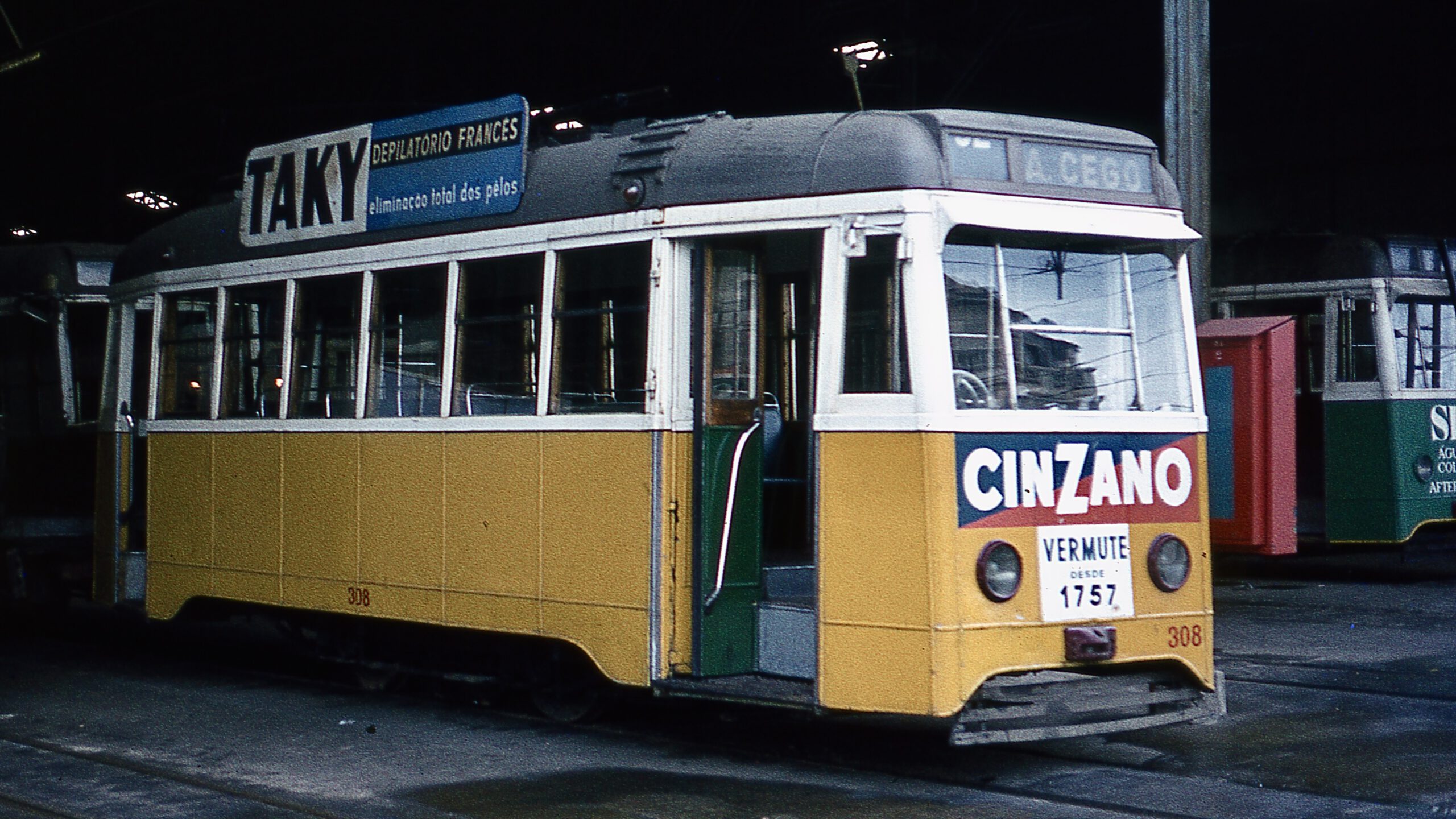
283<>610 Single-end Caixotes
In 1951 a start was made on building unidirectional Caixote type bodies. The prototype was 492, which had bulkheads and windows equal to 736-745 and 901-910. The windows of the other cars of this series were larger and had narrower posts. These cars had bus-type fixed seats and no bulkheads. After prototype 492, 48 cars…
-
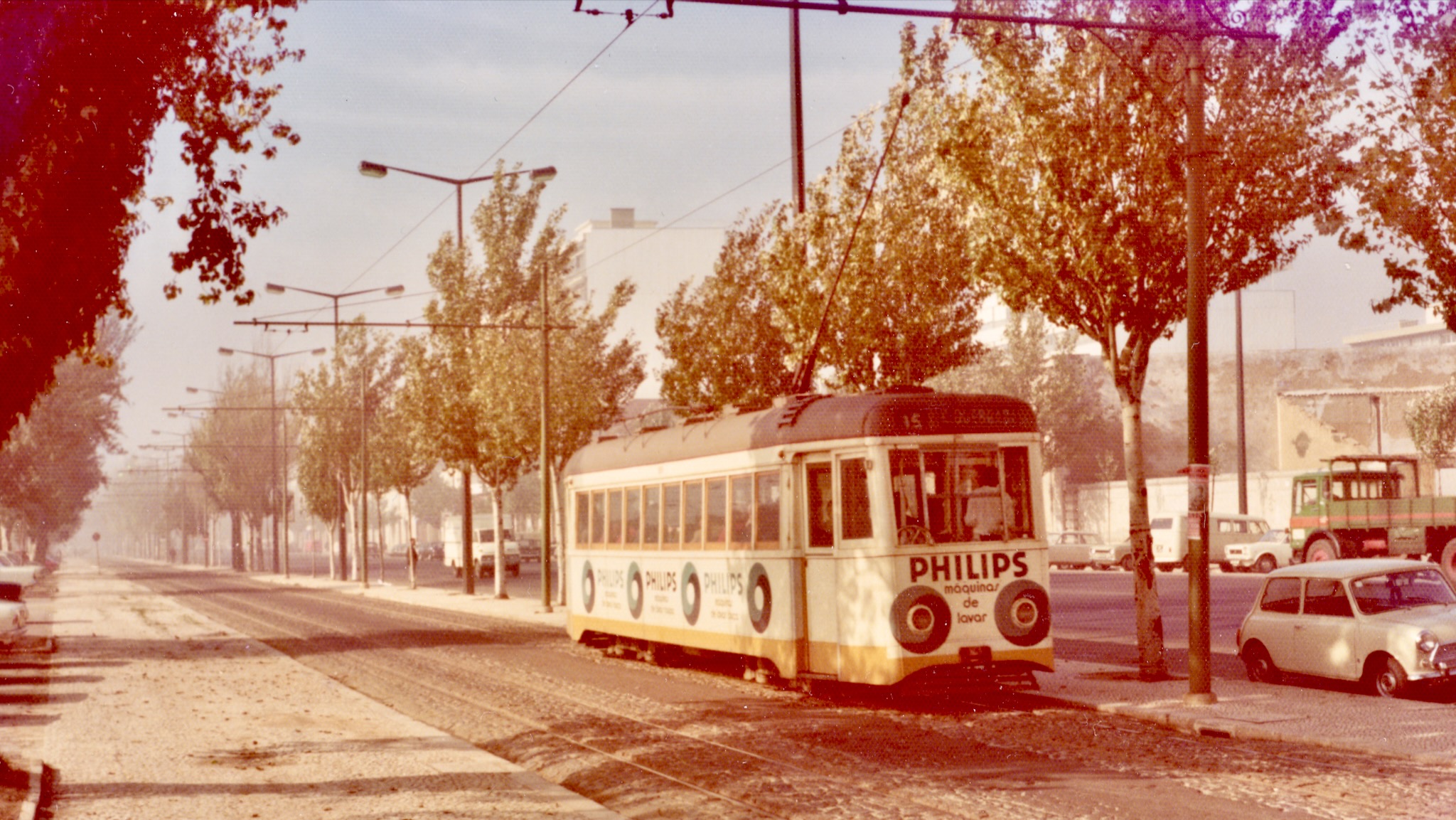
901-910 Saloon Caixotes
These double-ended bogie cars built in 1947-1948 using Maley & Taunton equal wheel bogies. The bodies were a “stretched” version of 736-745. They had the same type equipment as 801-805. They were mainly used on line 15. As they couldn’t be modified for one-man operation because of their entrances were too narrow for the required…
-
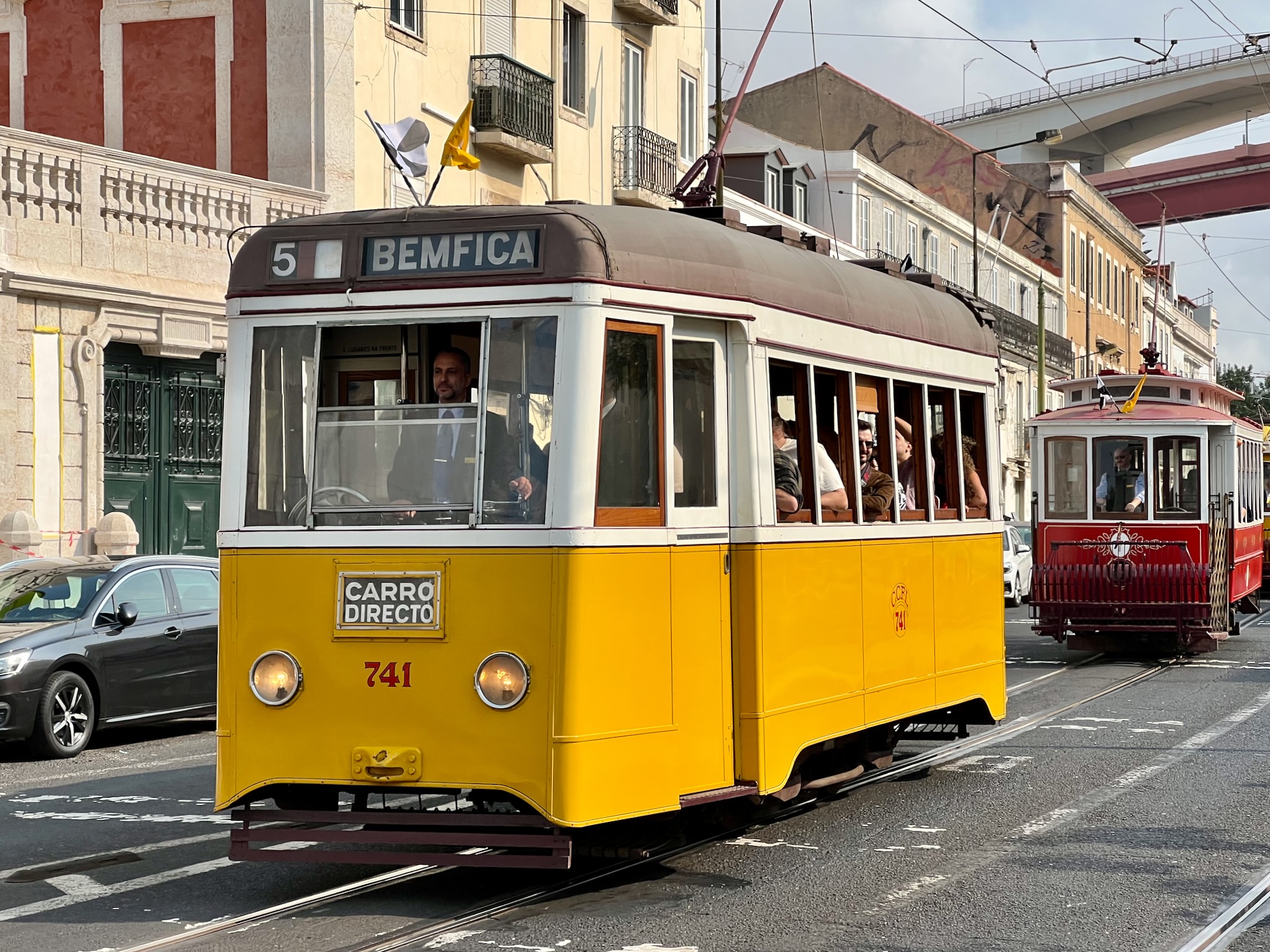
736-745 Double-end Caixotes
The double-end four-wheel cars 736-745 were built in 1947, with Maley & Taunton swing-link trucks, MV 115 45-hp motors, English Electric K33 controllers and “hilly route” braking systems. They were traditional in layout with full saloon bulkheads. As driver operated doors required for one-man operation, didn’t fit in their narrow entrances, about 1987 the bodies…
-
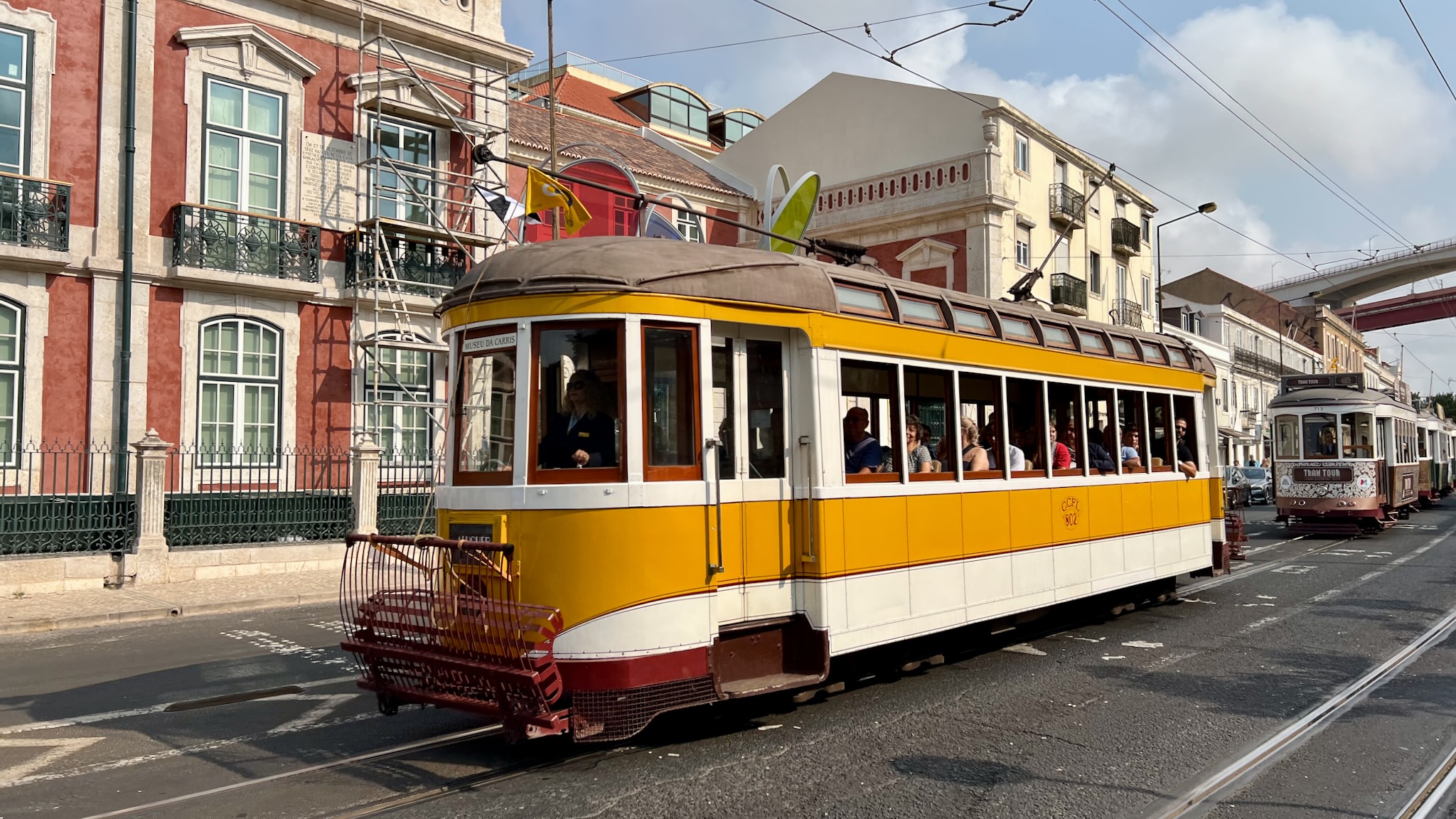
801-810 Carros de Boi
By 1938 the old 2-axle open cars had been replaced by new 2-axle Standard cars. The São Luís cars had been reconditioned about ten years before. This meant that the oldest cars in service were all 4-axle electric trams and the open cross-bench trailers. Likely Carris wanted to execute a renewal program similar to what…
-
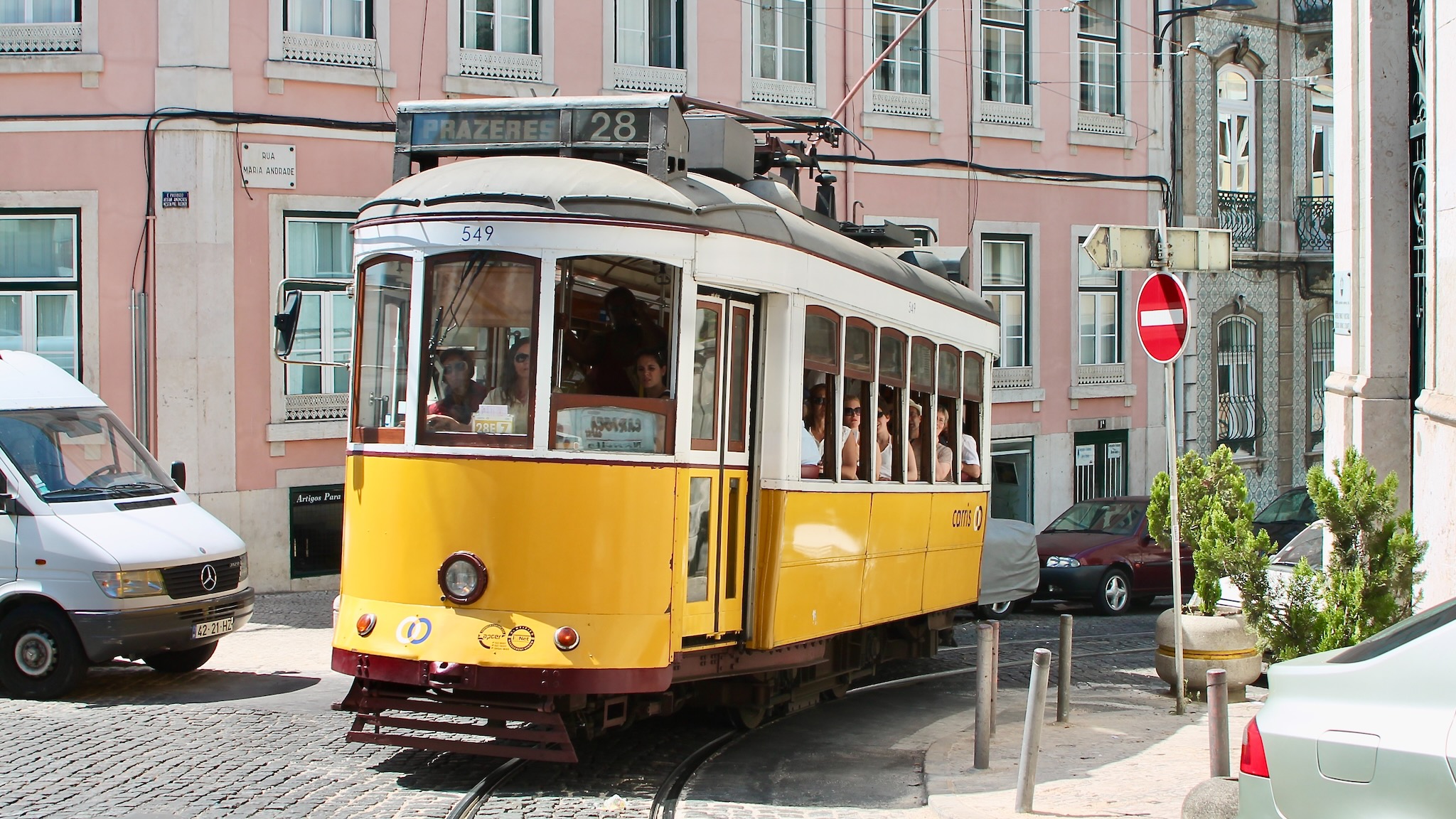
541-585 Remodelados
About 1995 a total of 45 of the small iconic trams were modernized for future working on the tramlines that were to be retained, mainly the also iconic line 28. They have the monopoly on all lines except for line 15.
-
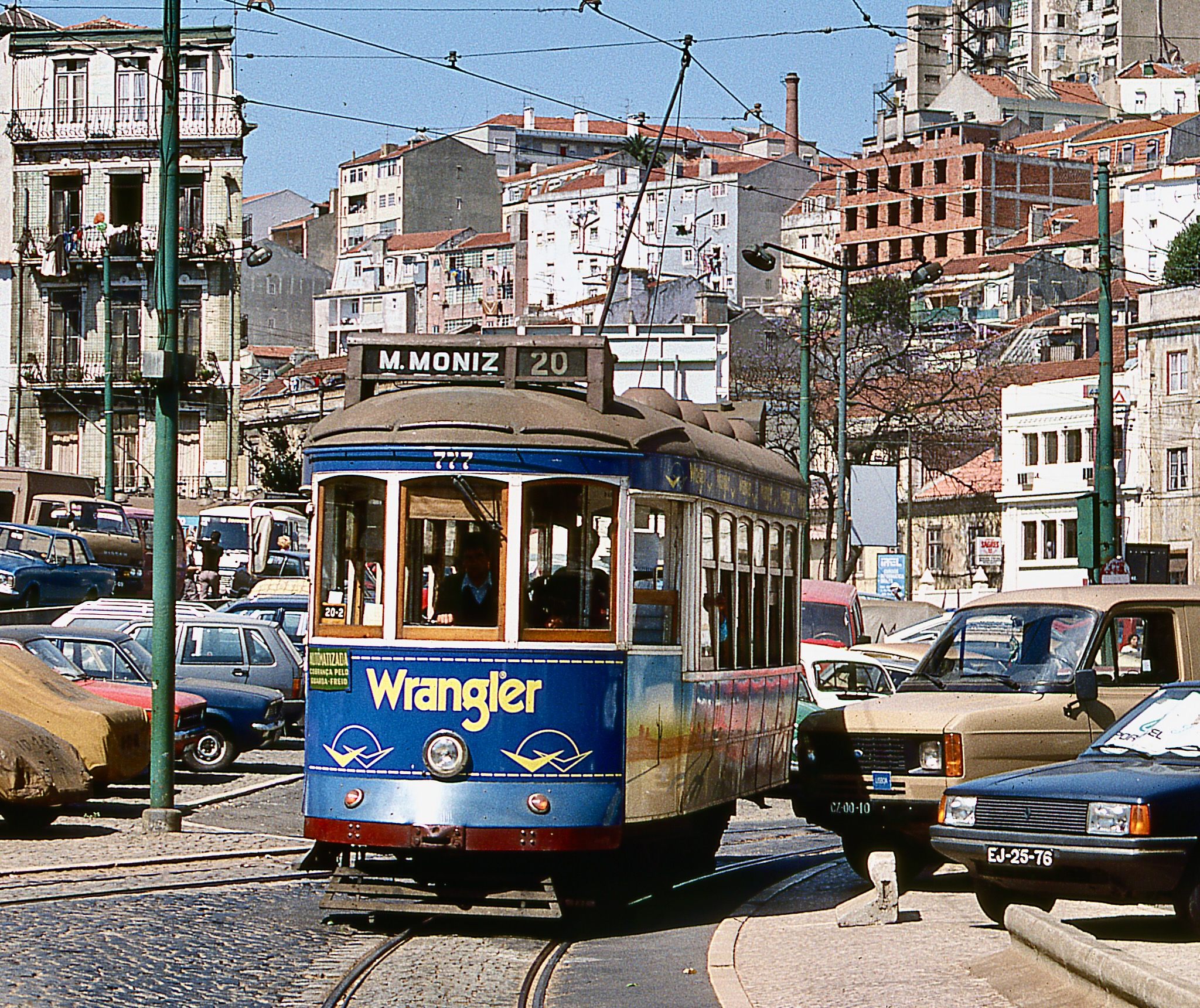
761-763 & 771-785 Single-end Standard
In the 1980’s Carris changed to one-man operation of the trams. That meant that the driver had to do the conductor job too, assisted by ticket validation machines. The trams also needed driver operated doors. Although the fleet was still much larger than needed, not all trams could be modified for one-man operation. Above that…
-
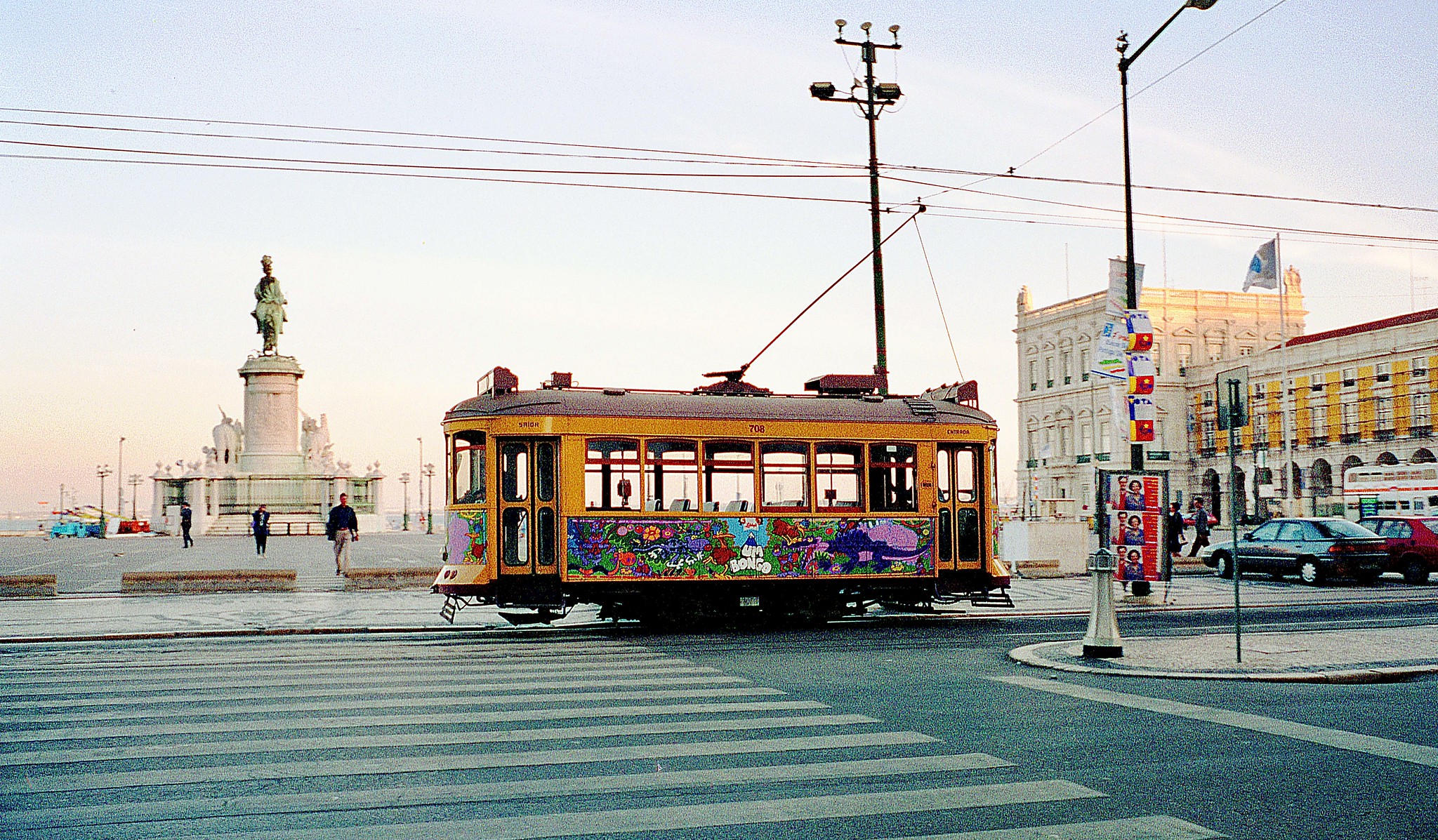
613-617 & 701-735 (737, 738, 741-745) Standard
These were standard four-wheel cars built by the workshops for the hilly routes. They had Maley built type 21E swing link trucks, air brakes on the wheels, electro pneumatic brakes on the rails and manual brakes on both the wheels and rails. They were built in 1935 (613-617), 1936/7 (701-725), 1938 (726-730) and 1940 (731-735).
-
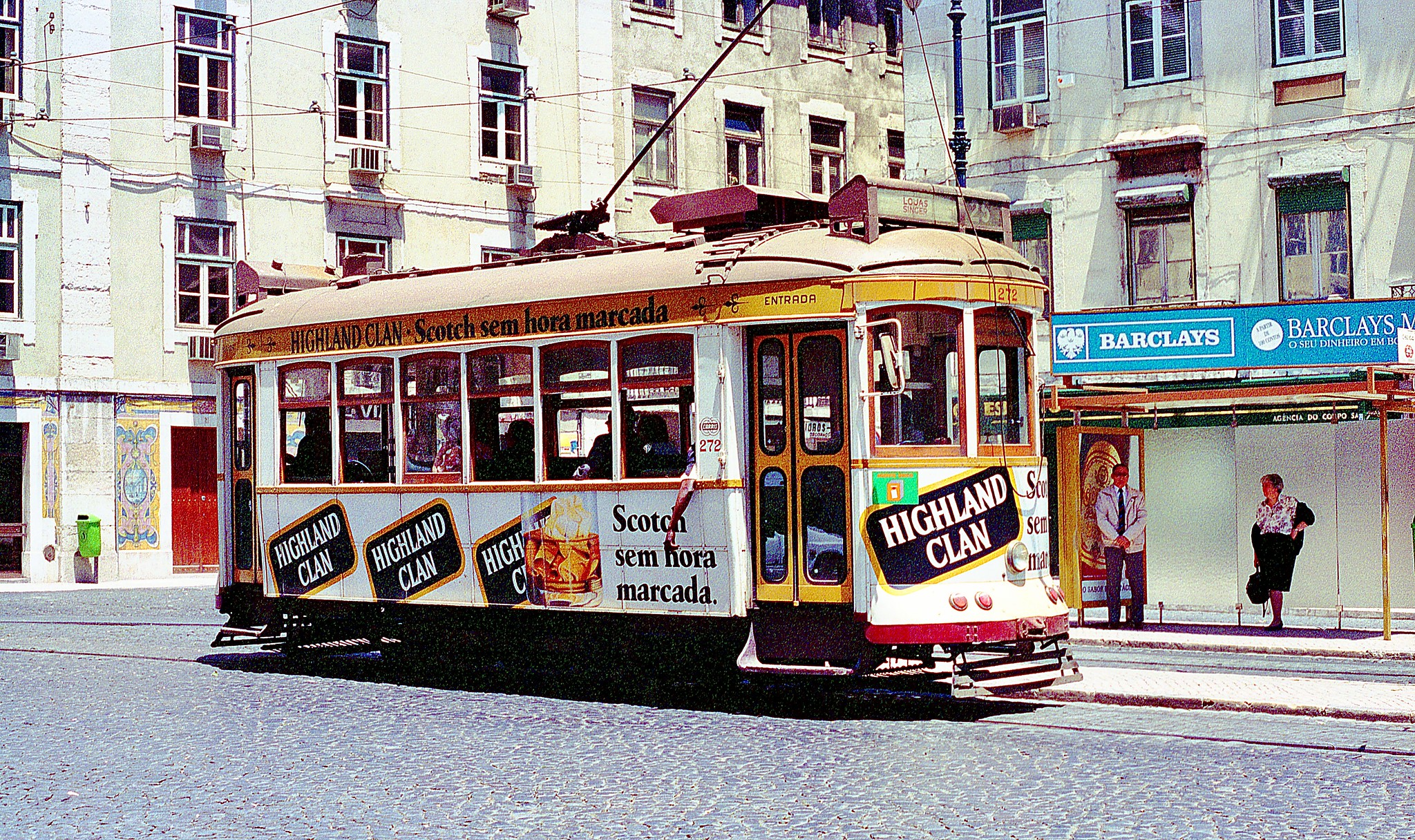
203-282, 415, 455, 467, 468 & 483 Standard
These trams were built with the use of reconditioned Brill 21E trucks and GE59 motors of withdrawn older trams. They had air brakes and English Electric K3 or BTH B510 controllers. Their platforms were 149 mm lower as the saloons and the wheel ø 851 mm.
-
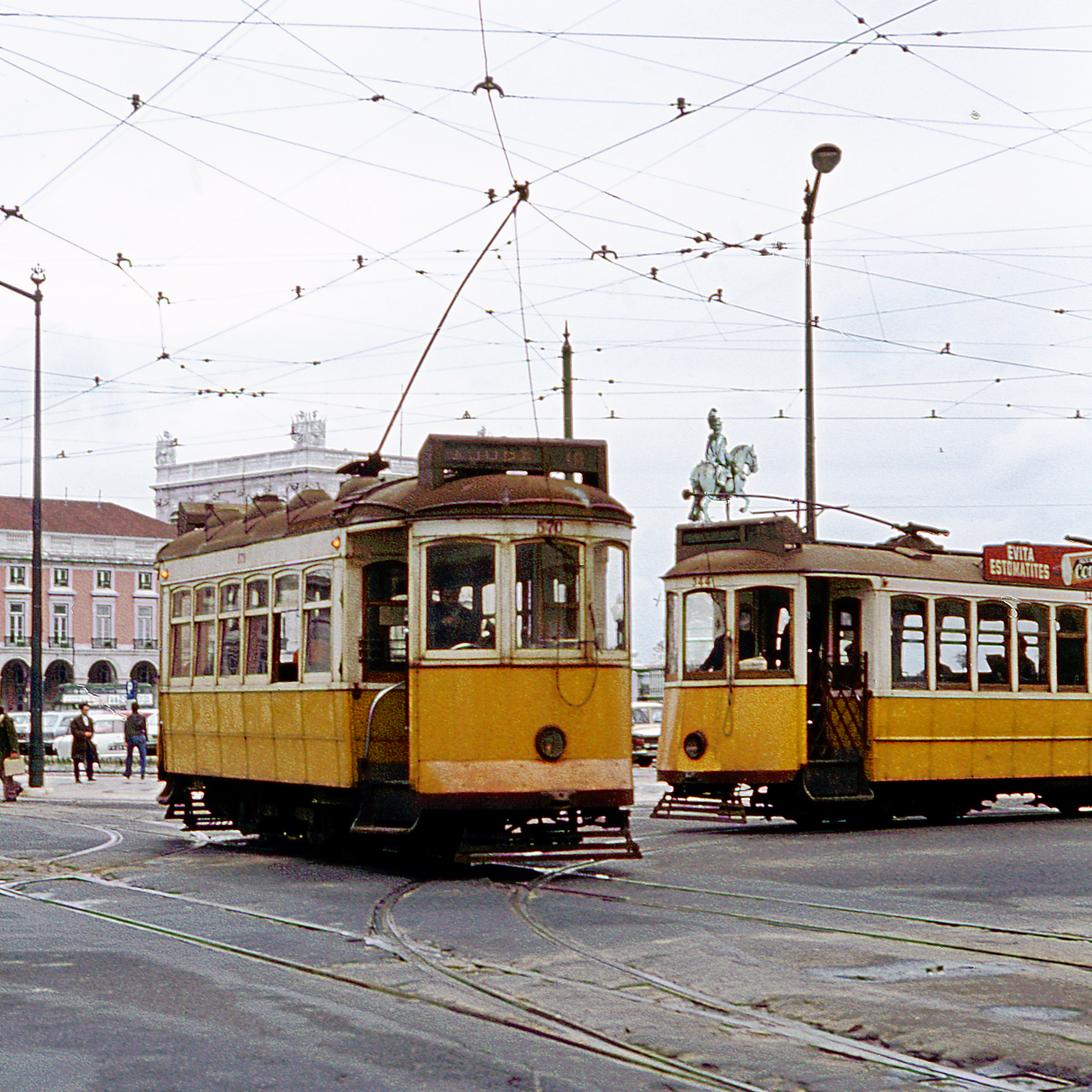
552-571 Standard meio degrau
These trams were built by Carris in 1931. Their platforms were 108 mm lower as the saloons and the wheel ø 787 mm.Four were withdrawn in or before 1980 (552, 567, 569, 570). The other sixteen were about 1986 converted to single-end and upgraded for hilly-route service. 568 got the truck of 740 and the…
-
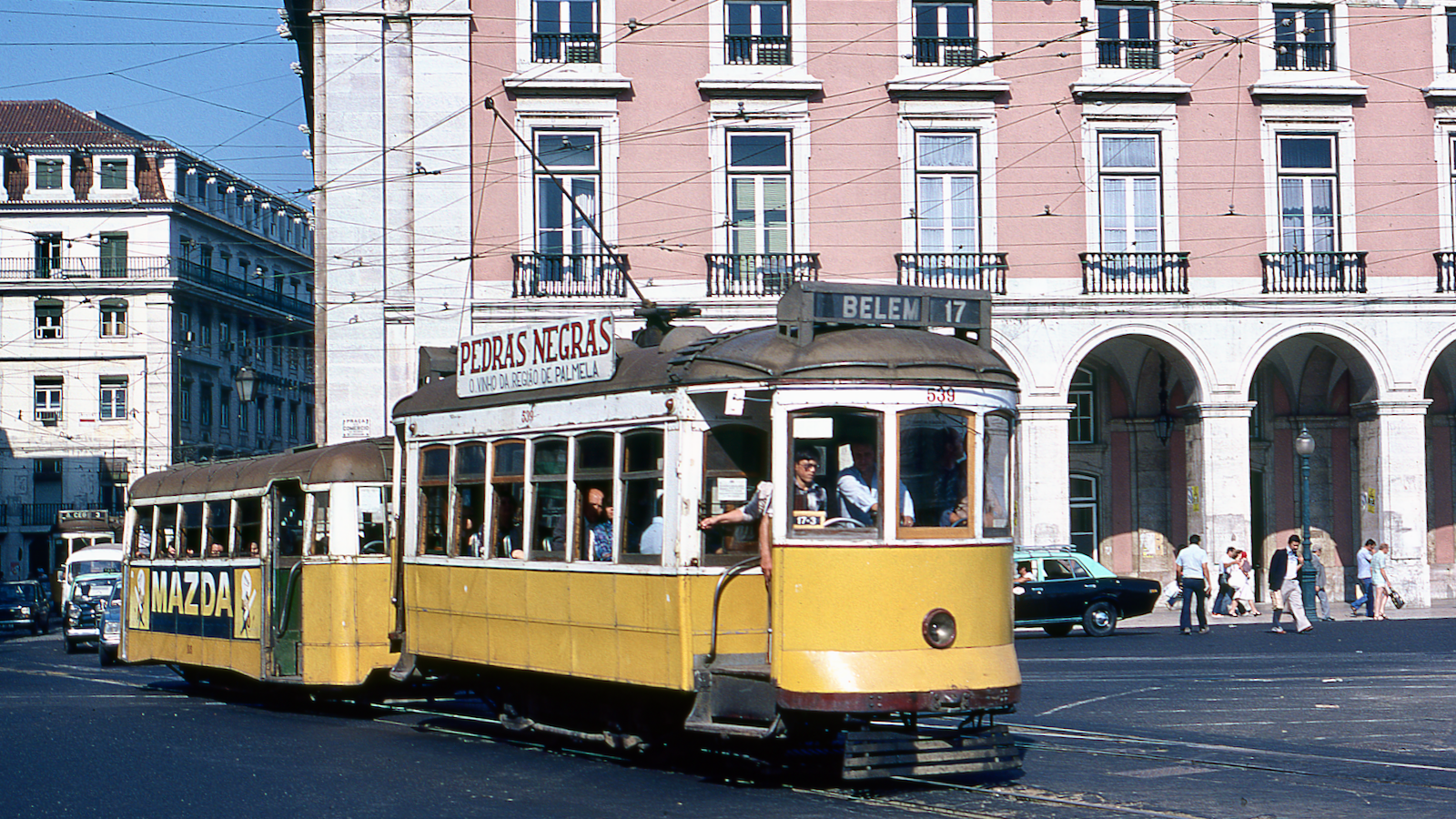
532-551 Standard plataforma alta
These trams were built by Carris in 1927-8. They were the first of what was to become the Standard Carris car body, having domed roofs and lifting widows which do not fit into roof-pockets. Like the Estrela cars the platforms are level with the saloon floors and they had 737 mm ø wheels. In the…
-
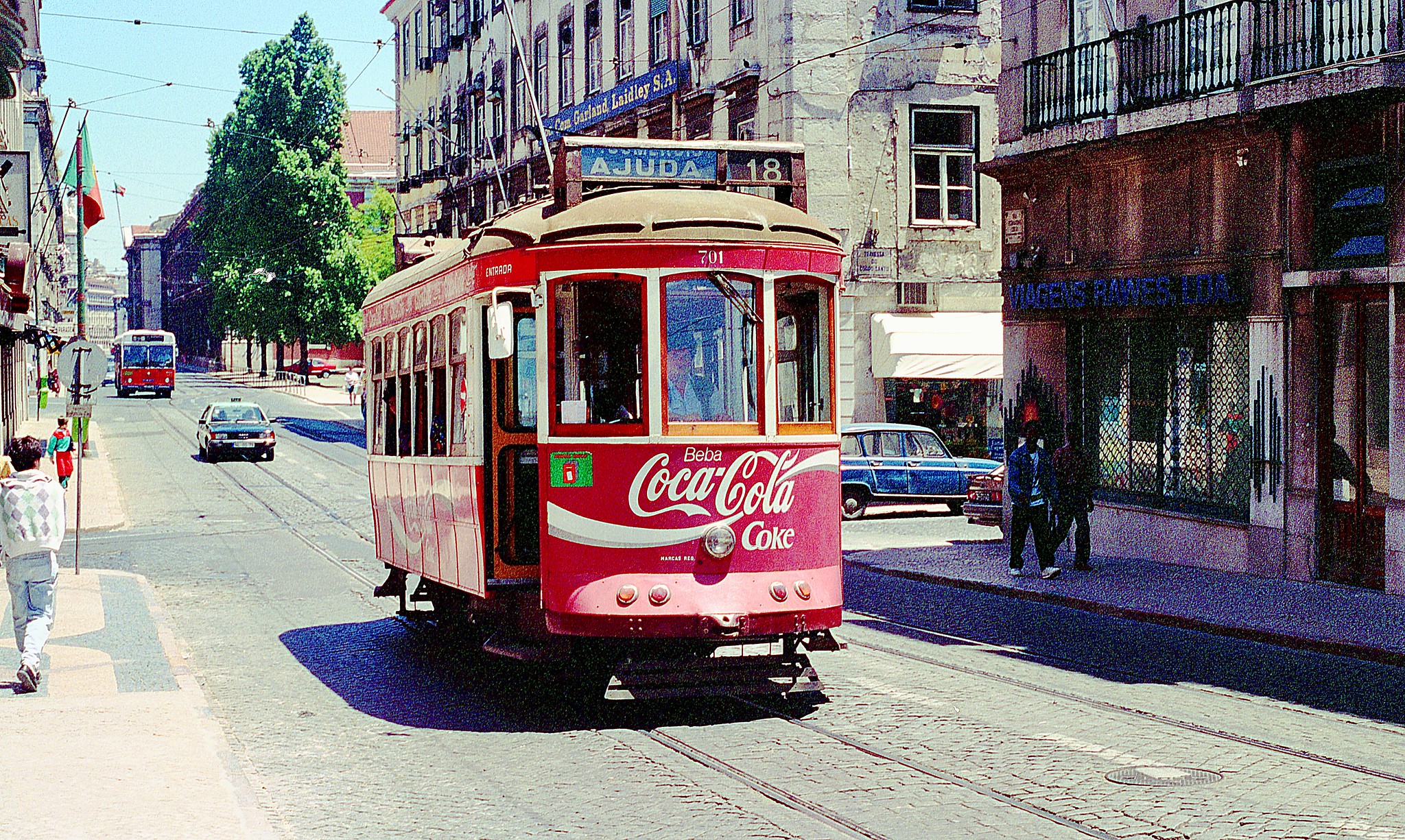
Iconic Standard Trams
While over time many different types of trams ran trough the Lisbon streets, there is one that is emblematic and can be considered as “The Lisbon Tram”. The late John Price introduced in the first edition of the book series “The Tramways of Portugal” for this type the indication “Standard”. This indication was never used…
-
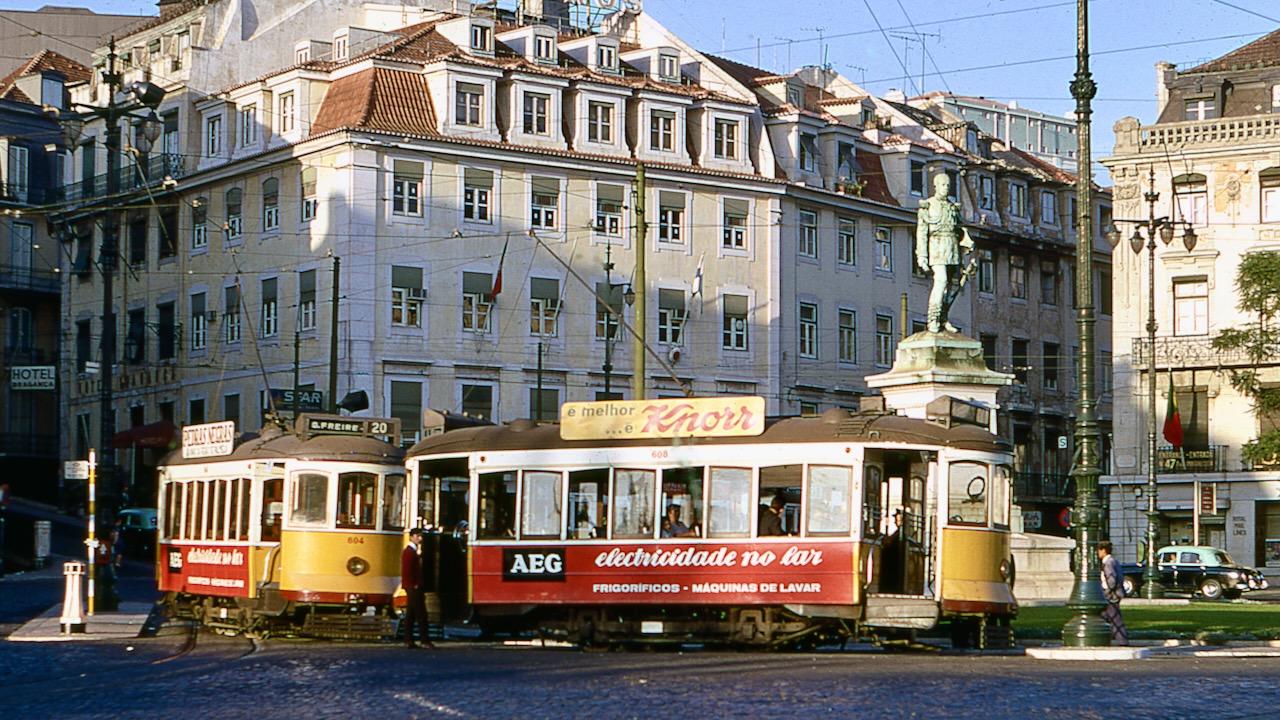
601-612 Estrela
These domed-roof trams with seats for 28 were buiIt by Brill in 1927 for the Estrela line. The 21ESL trucks came from Maley & Taunton. They had large sliding side windows, which made that only half of the windows could be opened. It made these cars unpopular. 601 and 612 (at least) were reposted as…
-
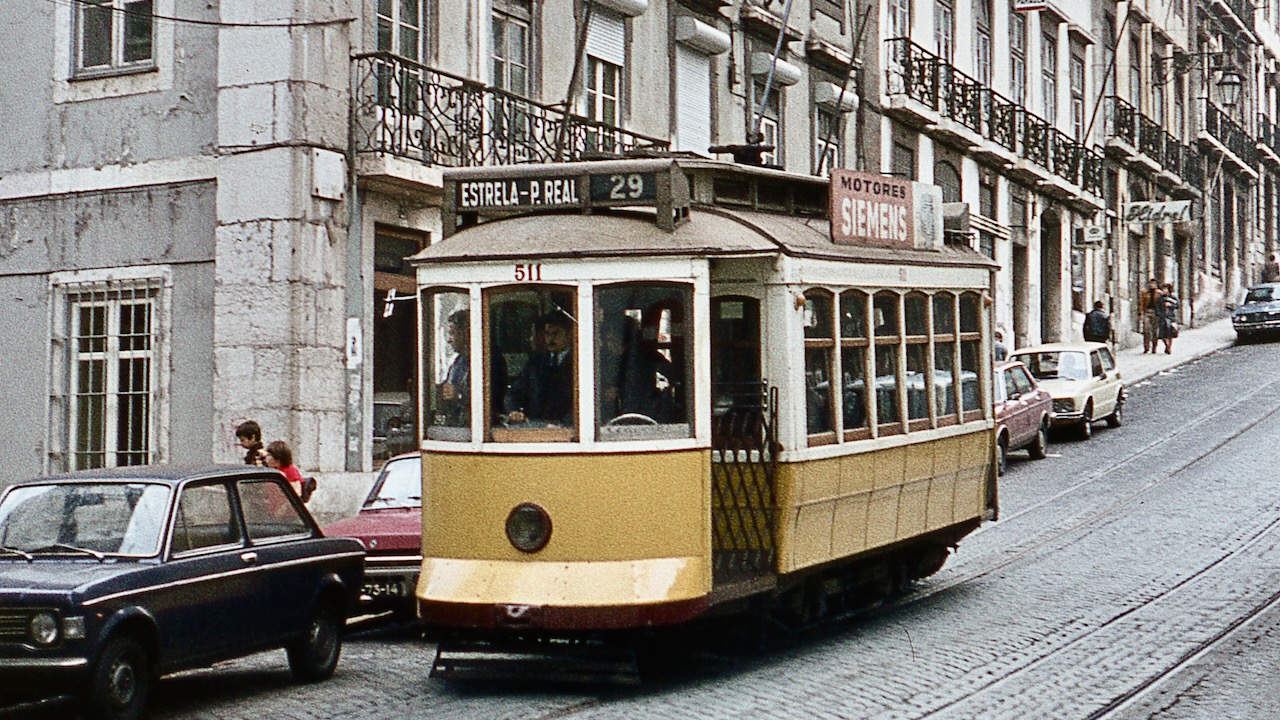
508-531 Pequenos semi-convertiveis – Small semi-convertibles – Carris
These tramcars were built by Carris in 1924-26. They were true semi-convertibles, with clerestory roofs containing window pockets, although when built Carris considered this type already as closed. Four cars (524, 525, 527 & 531) were later fitted with Metrovick motors, and Dick, Kerr controllers.
-
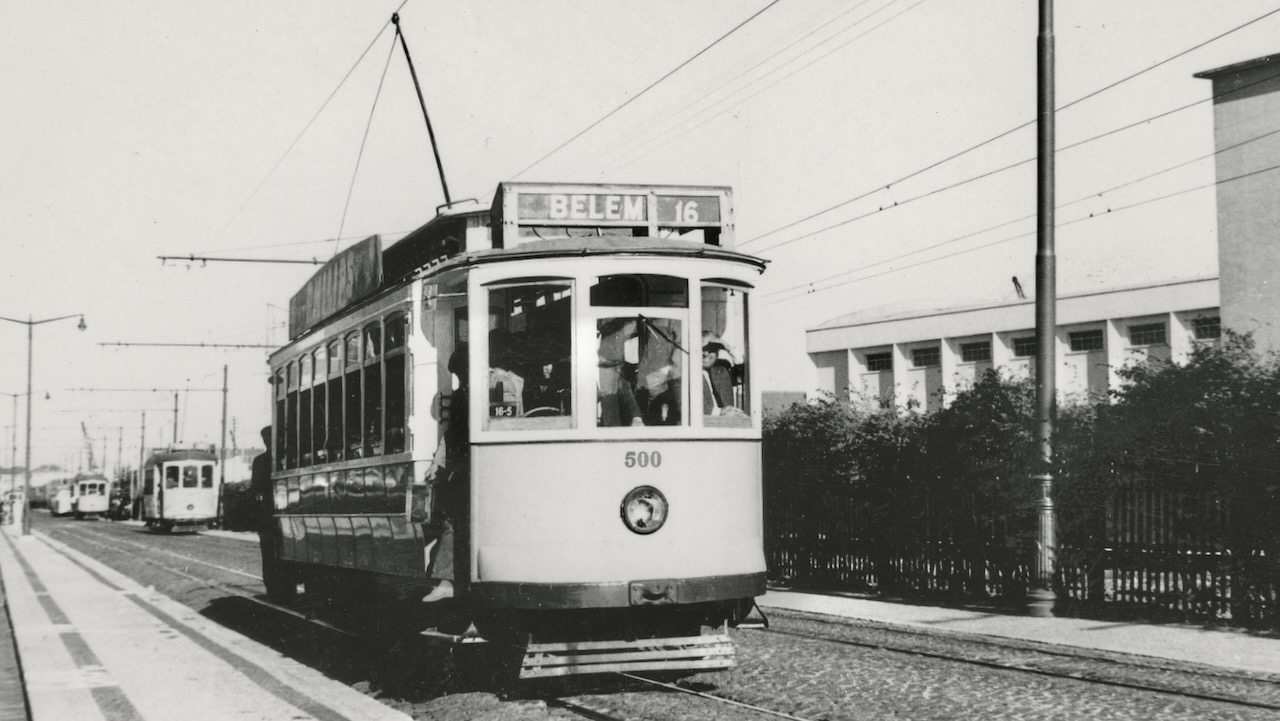
500-502 Radiax
Brill built these closed tramcars with drop windows and 26-seats. The bodies were a longer version of the small closed Brill trams that Brill delivered to Lisbon in the same period.
-
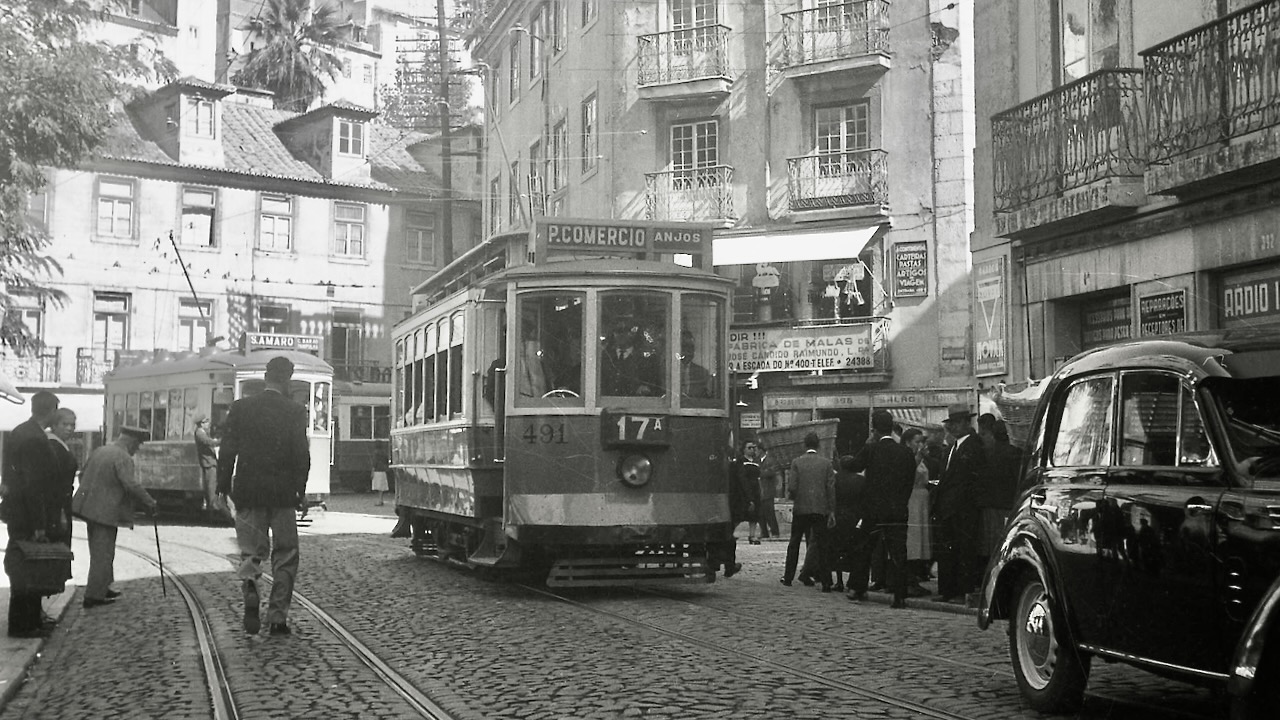
476-499 + 502-507 Pequenos fechados – Small closed trams – Brill
These closed tramcars were built by Brill. They had 20 seats and drop windows similar to the São Luís trams 400-474, but with more rounded ends and windscreens. 476-482 entered service in 1912, the others in 1914.
-
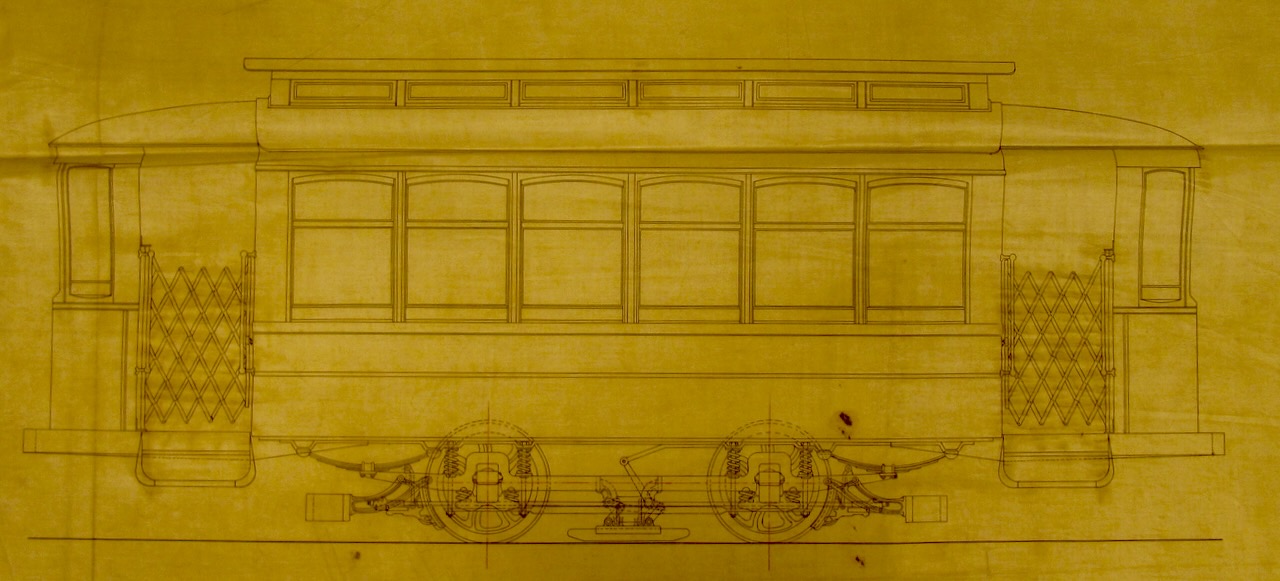
475 O Cruzador
Tram no.475 was a semi-convertible car built in 1909 by the Carris workshops on a Brill 21E truck. No photos are known of this car, but drawings show a typical Brill semi-convertible car with six windows. Because of its width and height, both more than the São Luís cars, it was nicknamed “O Cruzador” (The…
-
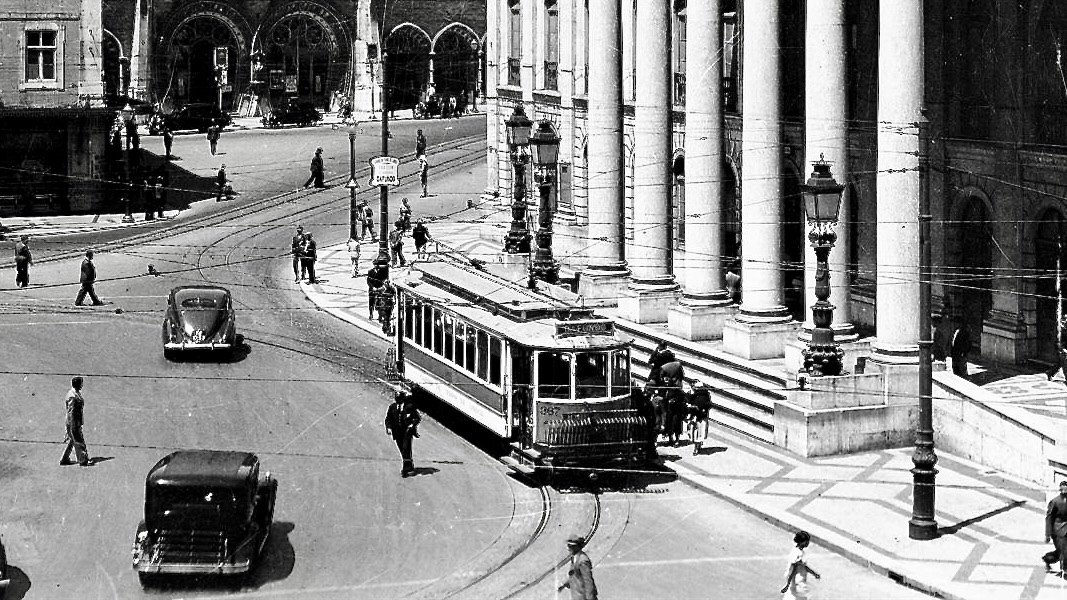
363-367 Carros do Povo
These 1907 Brill built bogie cars were for the low-fare Carros do Povo service between Santo Amaro and Intendente. The windows had originally no glass but only vertically-striped canvas shades. The large platforms were at the same height as the saloon floor and they had two steps at each entrance. The interiors were fitted with…
-
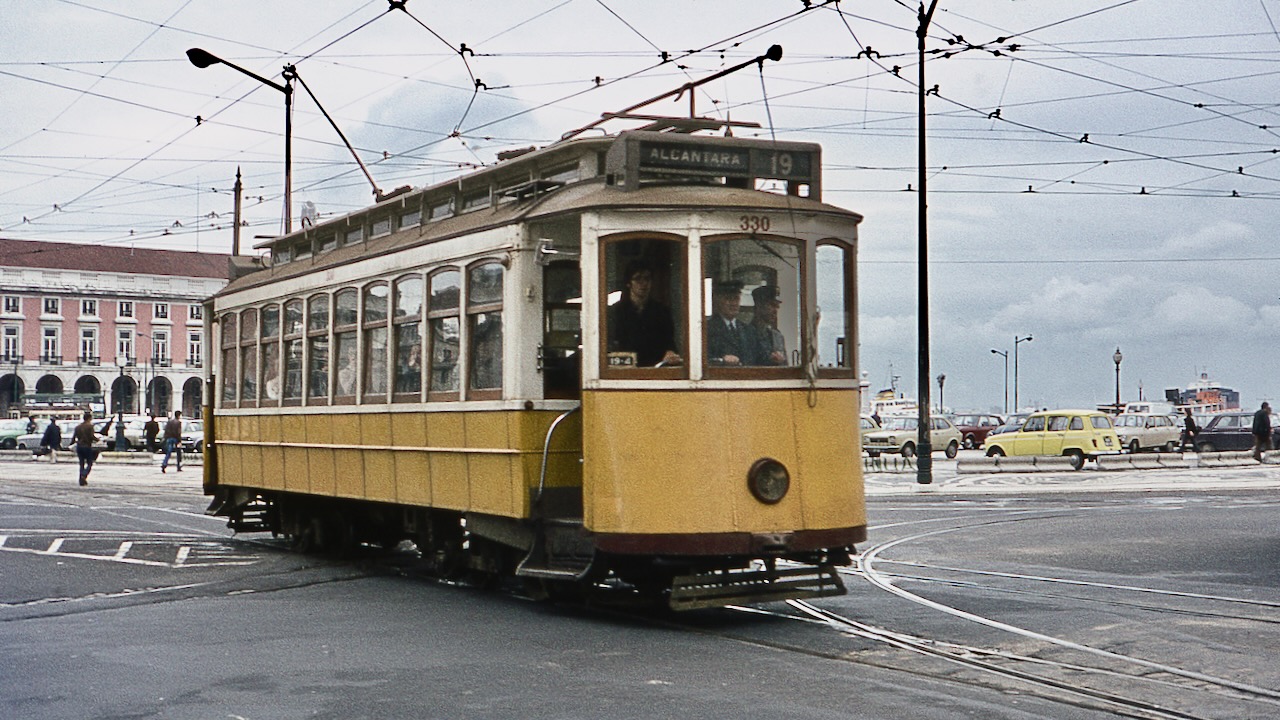
323-362 Grandes semi-convertiveis – Saloons
These saloon bogie cars were the first Lisboa cars of the patented Brill “grooveless post” semi-convertible design which proved very suitable in Lisboa’s sunny climate. The window sashes slid upwards into the coving of the clerestory roof. Of these forty tramcars twenty bodies were made by Brill and the other twenty by John Stephenson of…
-

400-474 Pequenos fechados – Small closed trams – São Luís
The bodies of these tramcars were ordered from the St Louis Car Company in November 1899, and had full-drop windows. The trucks were ordered in September 1900 from Brill. They arrived in May and June 1901 and entered service the same year. These trams were indicated as “pequenos fechados” (small closed) but also known as…
-
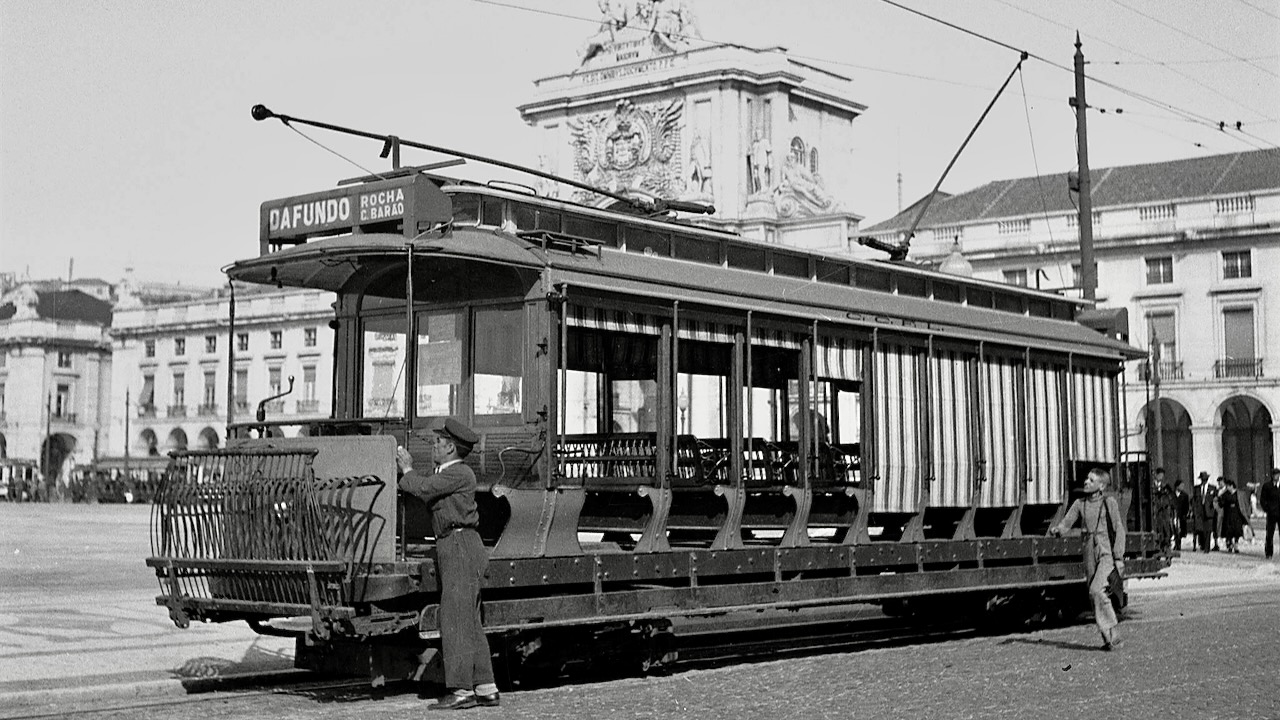
283-322 Grandes abertos – Large open trams
These large open cars were built by Brill. Like usual they were sent “knocked down” to save on the shipping costs, and had to be assembled by the Carris workshops in Lisboa. The first batch of ten cars arrived early January 1902 and the first of these cars was tested on the 27th of that…
-
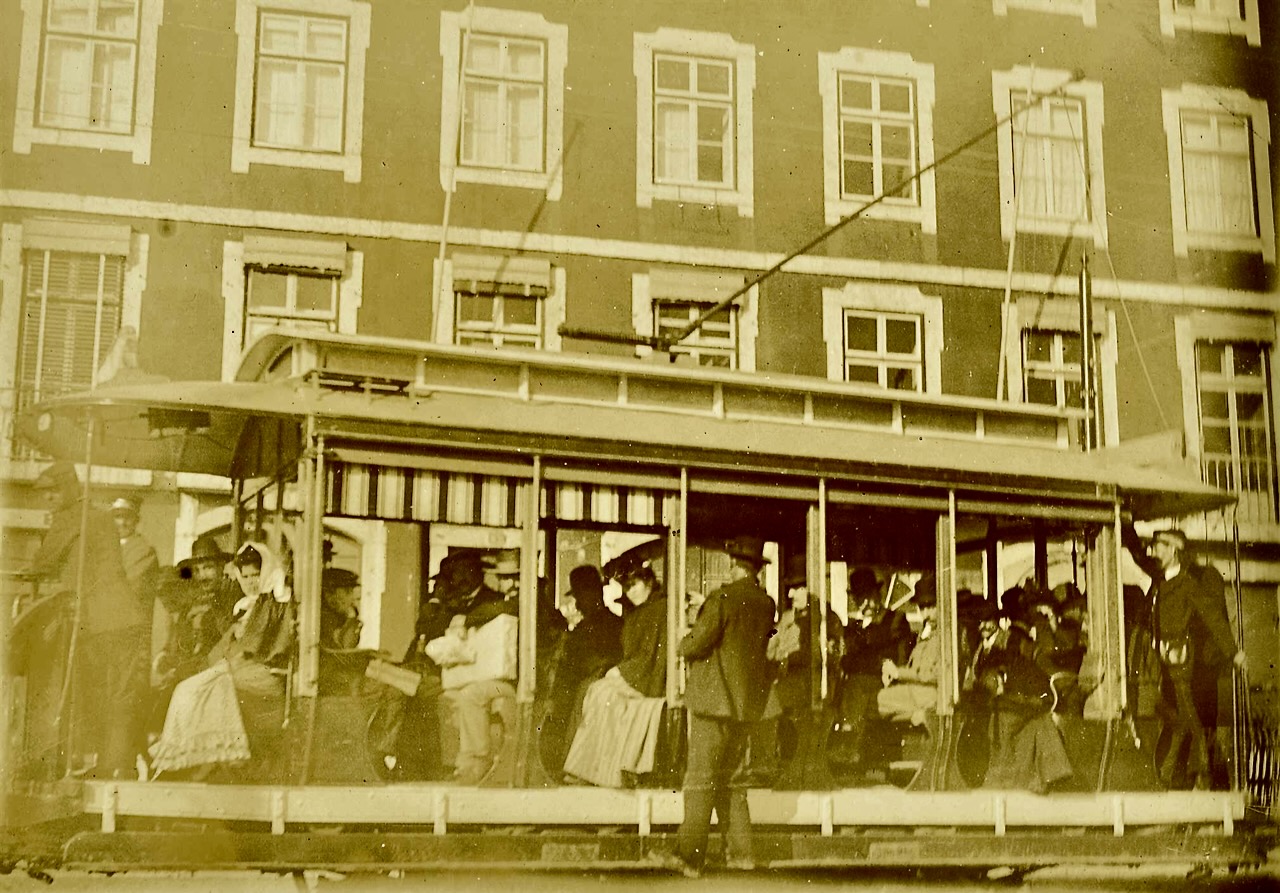
203-282 Pequenos abertos – Small open trams
In September 1899 Carris ordered these 2-axle open cross-bench cars from the J. G. Brill Co of Philadelphia. The trams were sent “knocked-down” to save on transport costs. The motors and other electric equipment were ordered separately from General Electric. They arrived between January and June 1901 in Lisboa. After assembling, they entered service on…
-
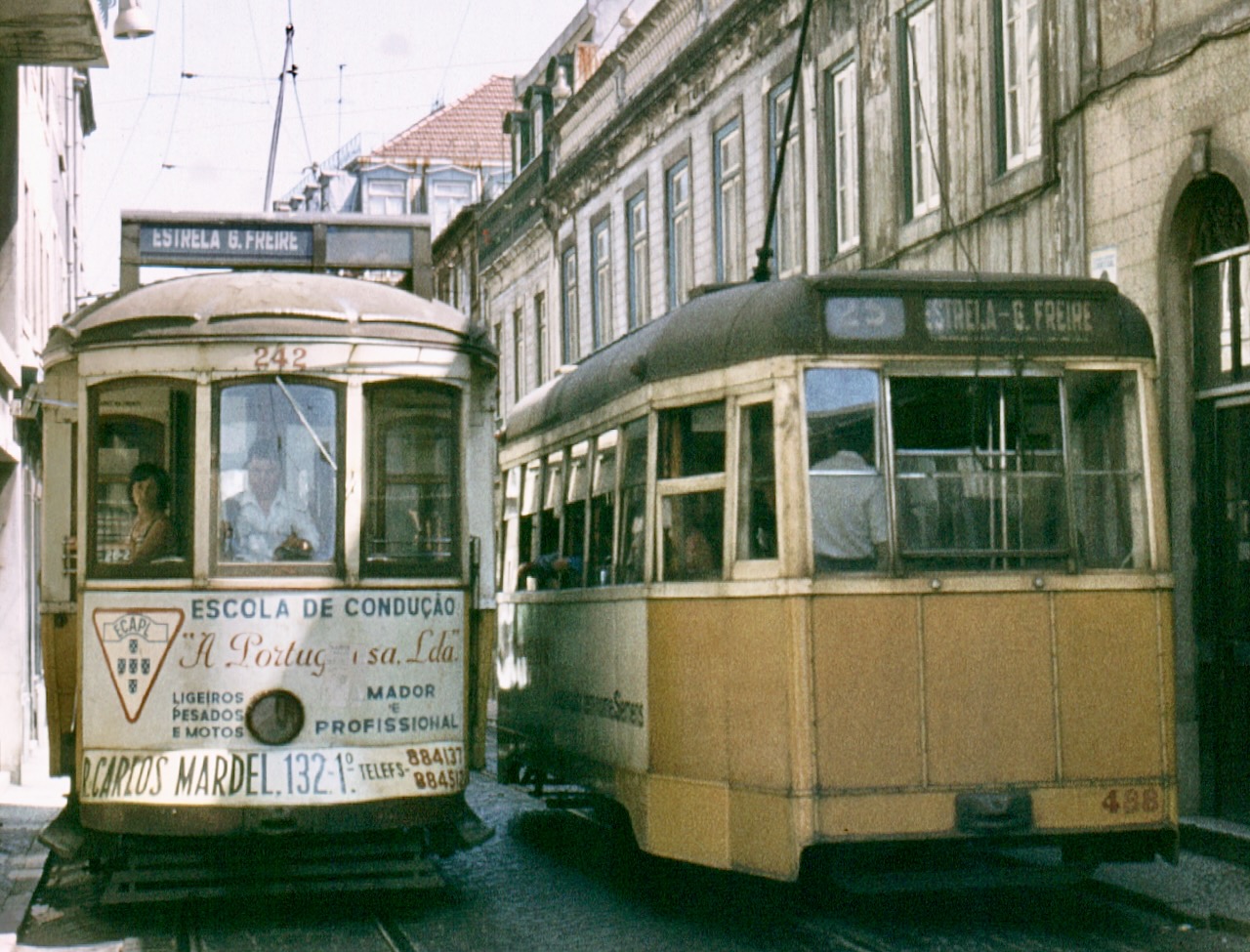
The electric trams of Lisboa
From 1900 to 1914 the tram company Carris de Ferro de Lisboa imported trams from America in dismantled form and assembled them locally in the workshops. Since 1925 Carris built cars to its own design, using trucks and equipment purchased in Britain and reconditioned trucks and equipment of older cars. From 1947 to 1963 the…
-

The Tram cars of Porto
The history of the many types of Porto tram cars is complex. On other pages the individual types will be discussed. On this page is an overview about their common history.
-
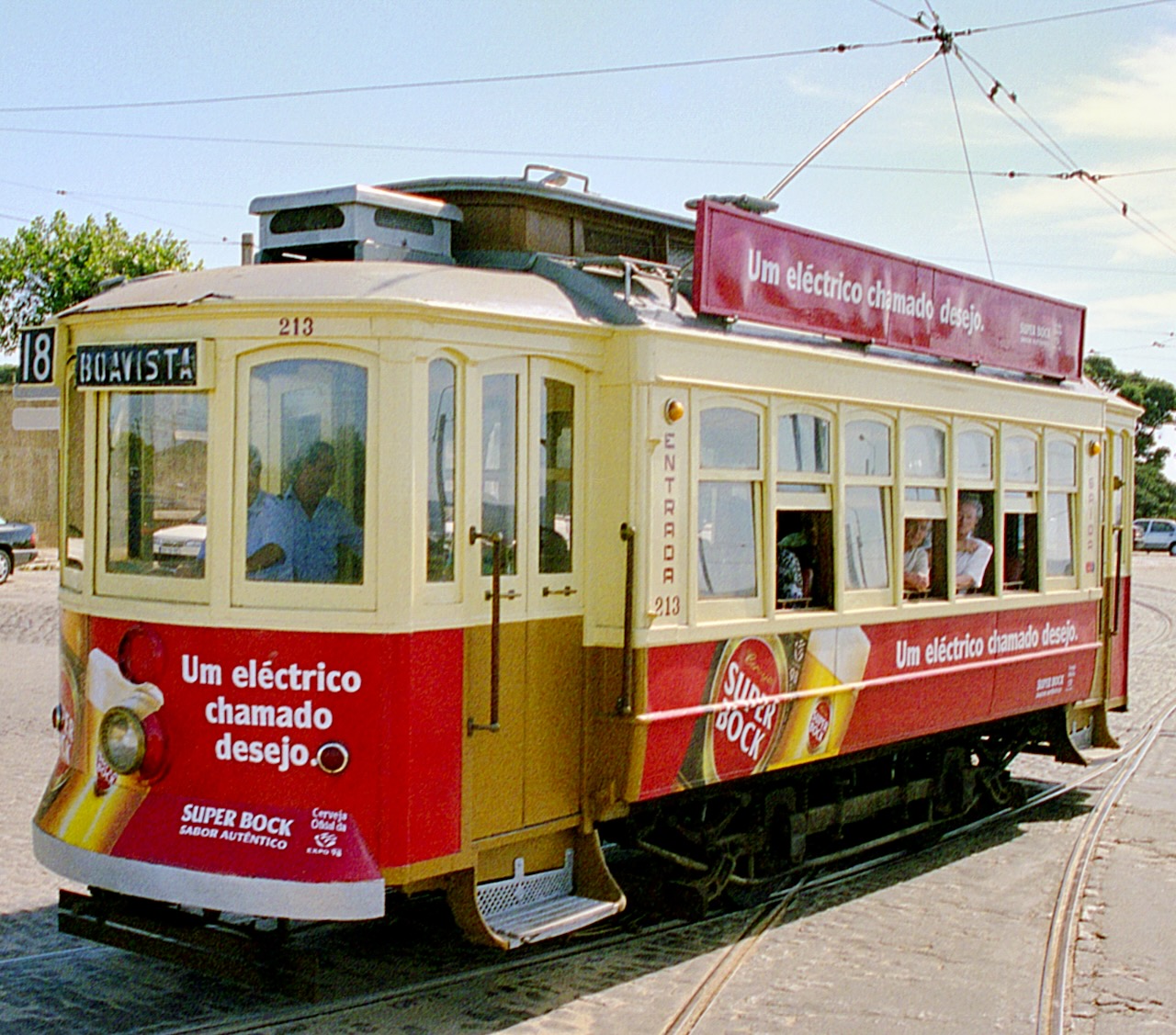
Brill-28 Plataforma Salão
In 1938 (re)construction of the Brill-28 ceased in favour of reconstruction into the Brill-28 Plataforma Salão model. In total 24 to 26 were made until 1946. Work on the last one only began short before take over by the STCP on 1 July 1946 and the car was only ready after this date.
-
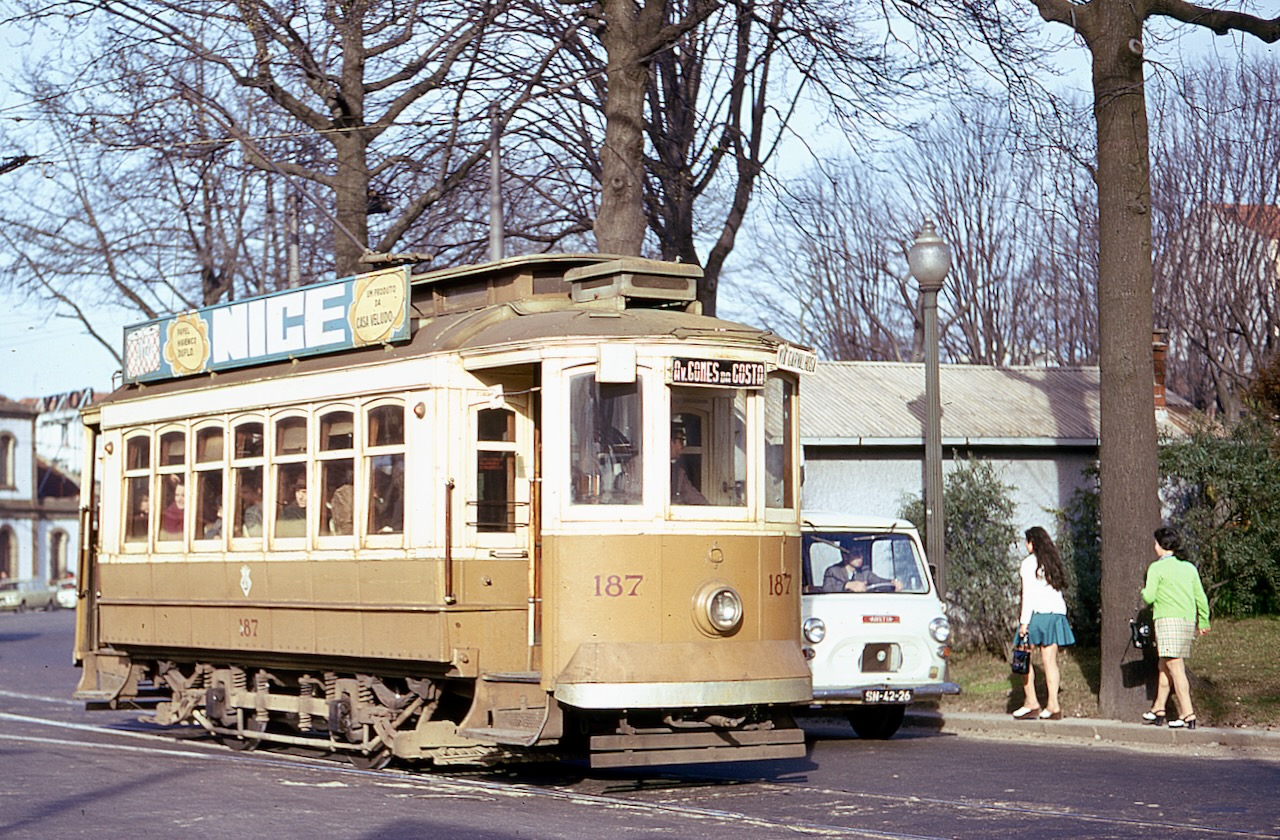
Brill-28
To get cars with more capacity the CCFP started about 1925 to widen Brill-23 cars from 2.20 m to 2.40 m. This made it possible to have the seats in a 2+2 arrangement instead of the old 2+1. The seating capacity became 28. Not only were old Brill-23 cars reconstructed, new cars of the Brill-28…
-
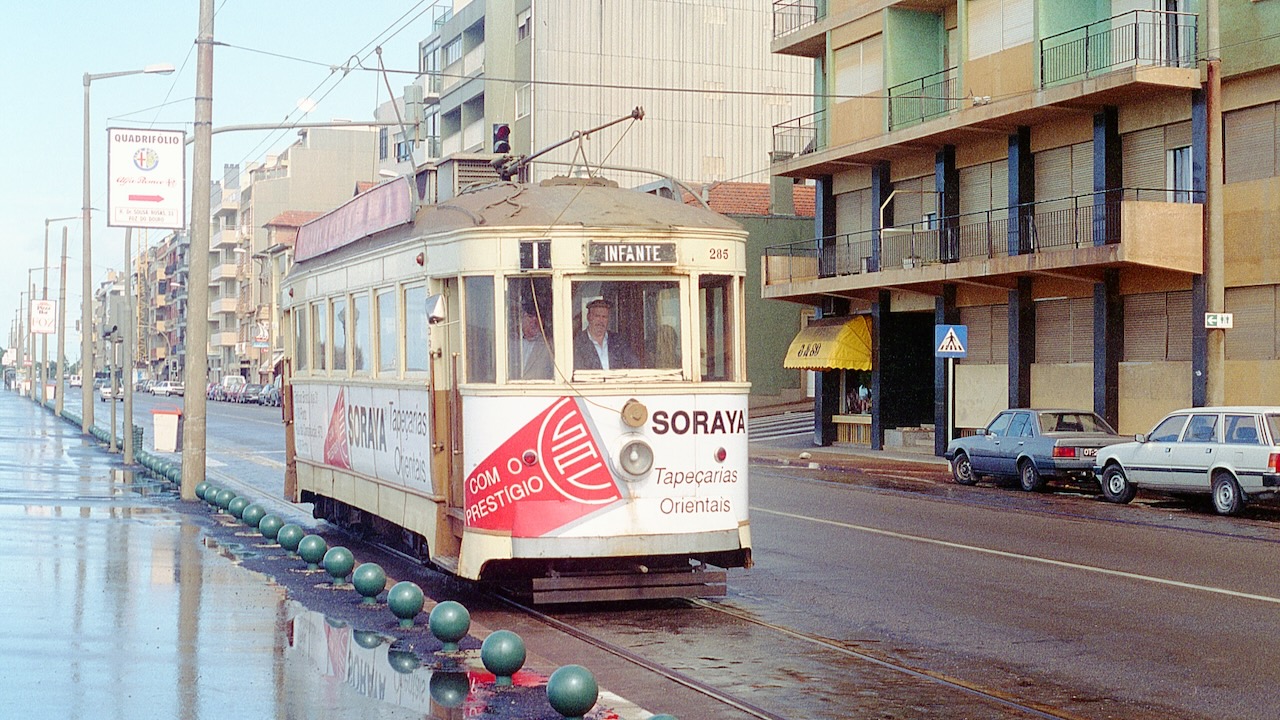
Belgas
After the 1928 Boavista fire ten new tramcars were acquired from Familleureux in Nivelles, Belgium. Delivered late in 1928, most entered service in the beginning of 1929. The bodies with large windows and without clerestory roofs are completely different from the American style, which was normally used in Portugal. The CCFP numbered the Belgas as…
-
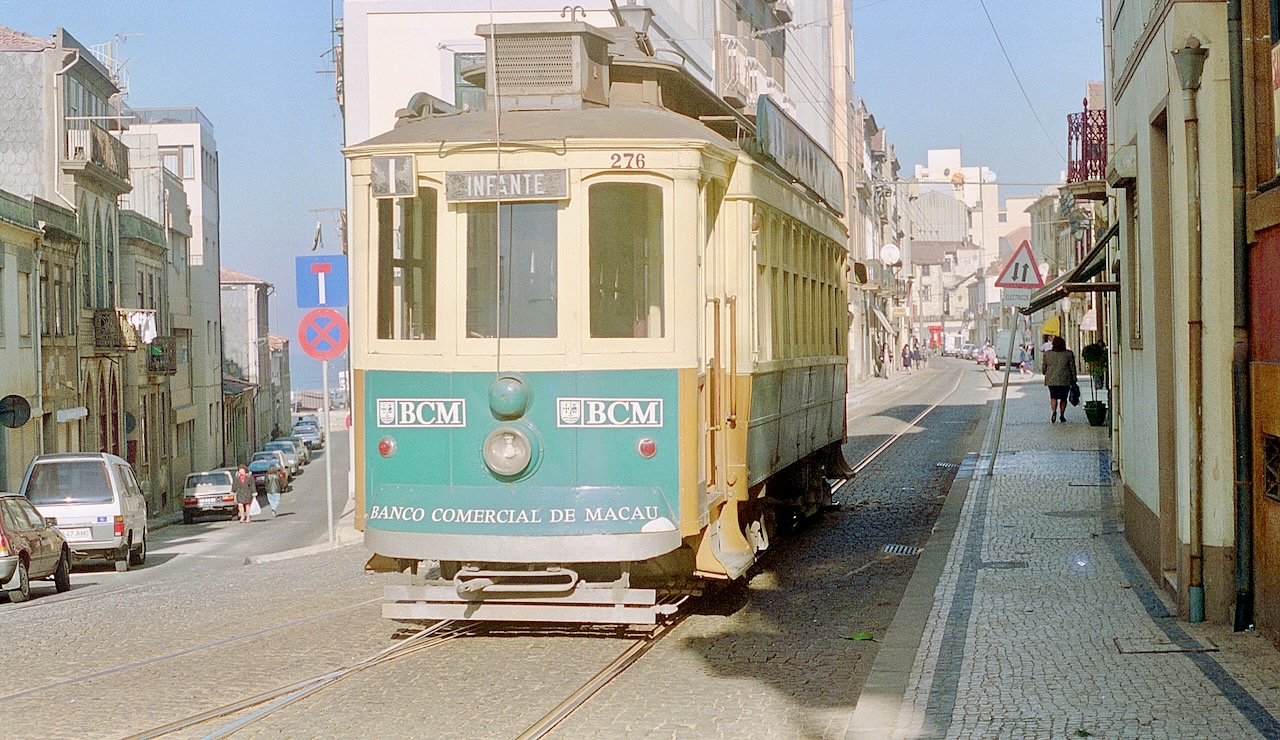
Brill-bogie trams of 1926/8
In 1926 the workshops of the CCFP constructed two new bogie cars inspired by the car delivered by Brill in 1904.These cars were wider than the original and got extended platforms. They had the numbers 200 & 201. In 1928 six more cars were constructed. These were a few centimetres wider and longer and numbered…
-
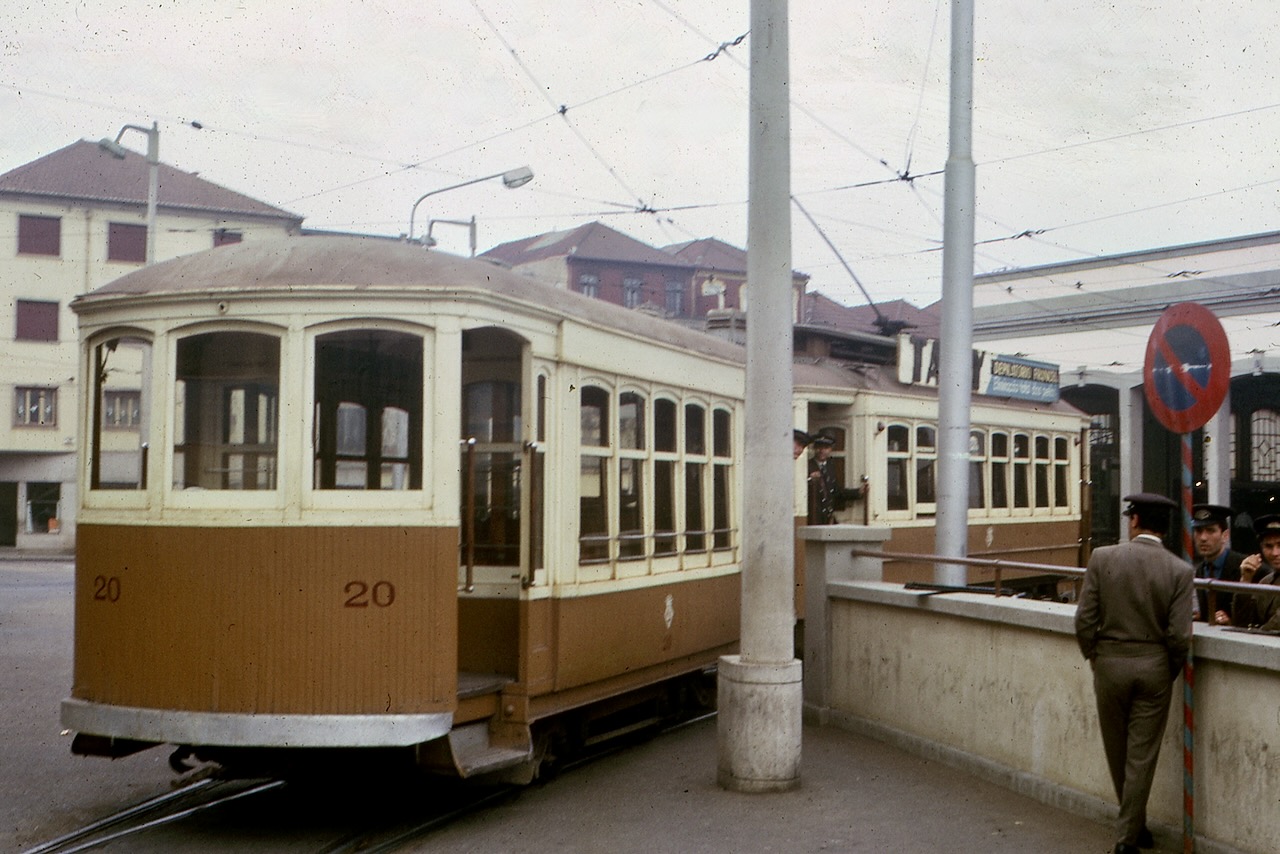
Fumista trailers
In 1934 the workshops made three trailers of the Fumista type. Trailer use with the CCFP was limited to the lines 1 and 5. The STCP used these trailers also on line 9// after through running to Gaia was abandoned by suppressing line 14/. They were withdrawn from service in 1966.
-
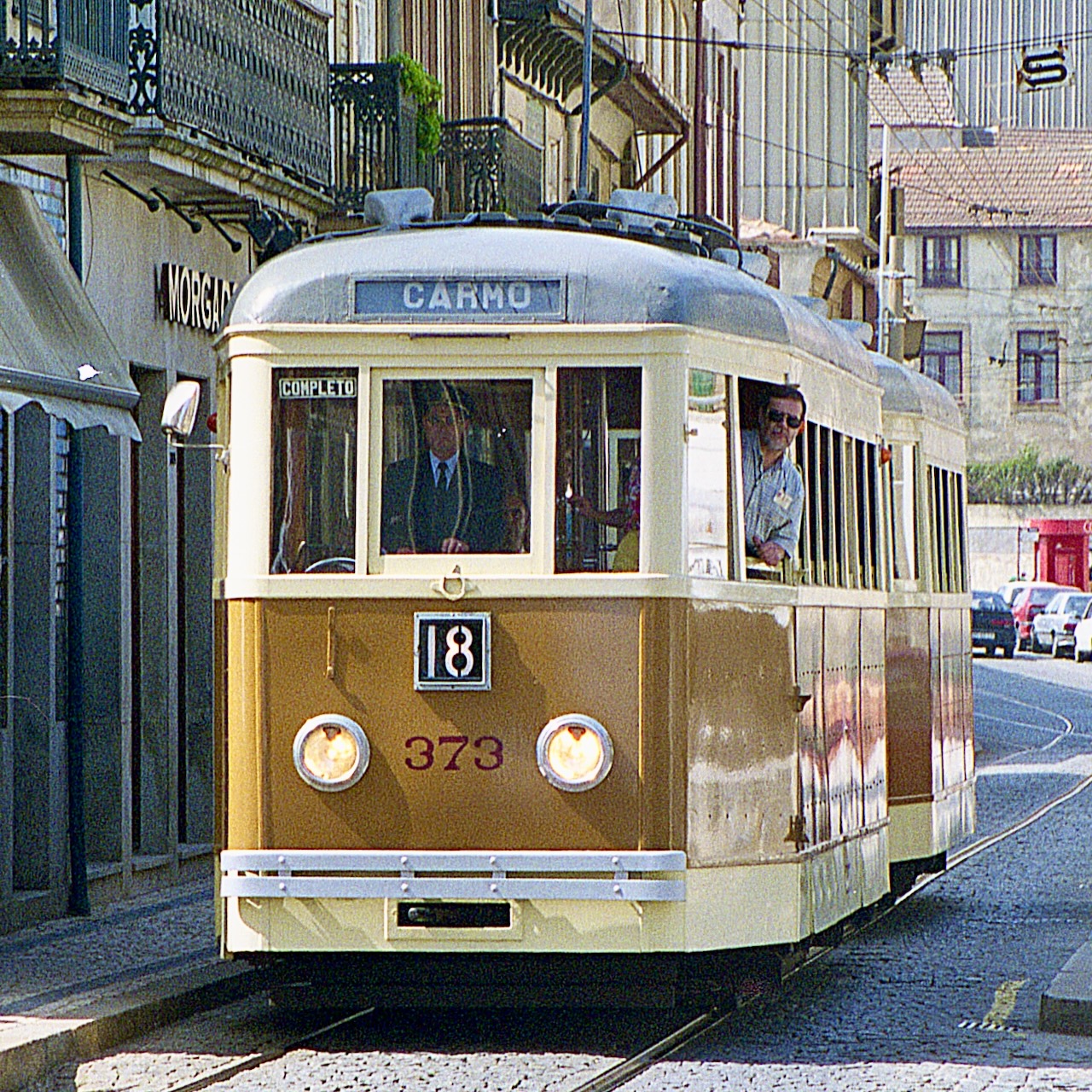
Pipis and Pipizinhos
When taking over the old tram system of the CCFP in 1946, the STCP wanted to modernise the old fleet. As available funds were insufficient to acquire new trams from abroad, new constructions were limited to simple cars with antique types of trucks and electric equipment. A tram set consisting of motor car + trailer…
-
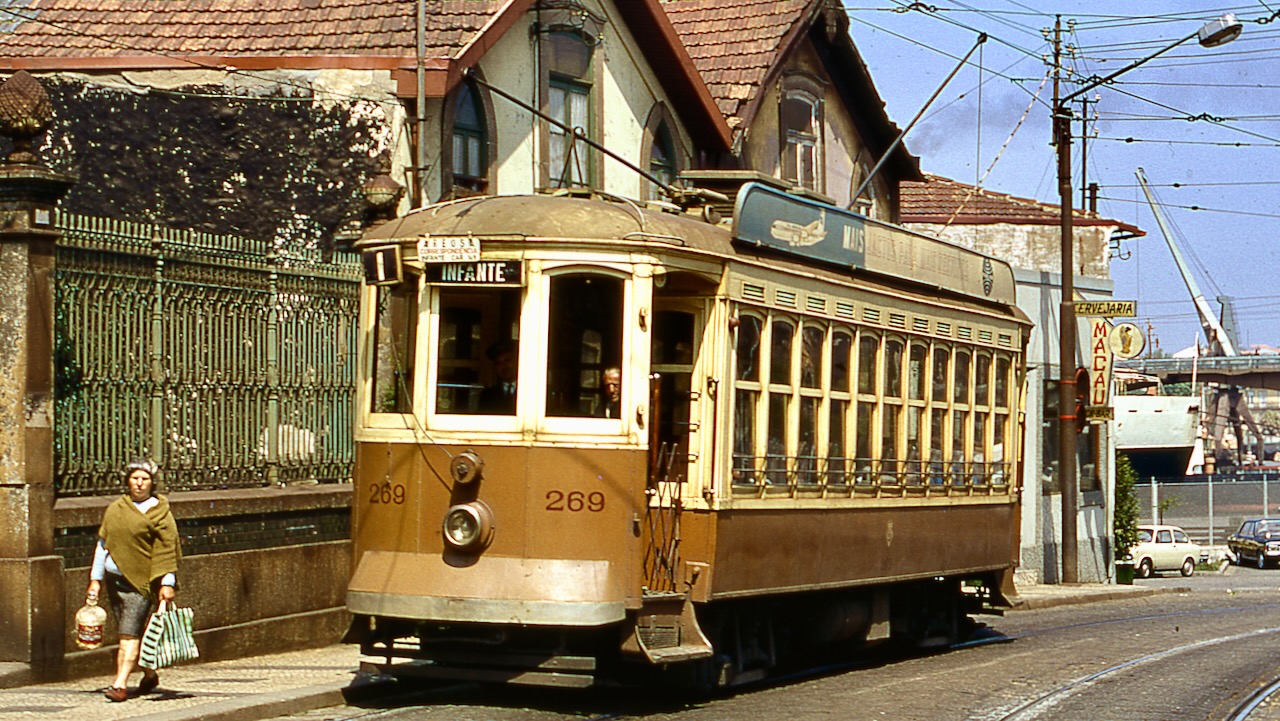
Fumistas-bogie
In December 1930 the workshops started the construction of four cars, which were the bogie version of the Fumistas. The very deep windows however could be removed during the summer period. When open it was allowed to smoke in the cars, which gave them their nickname. Converting the cars twice a year was abandoned in…
-
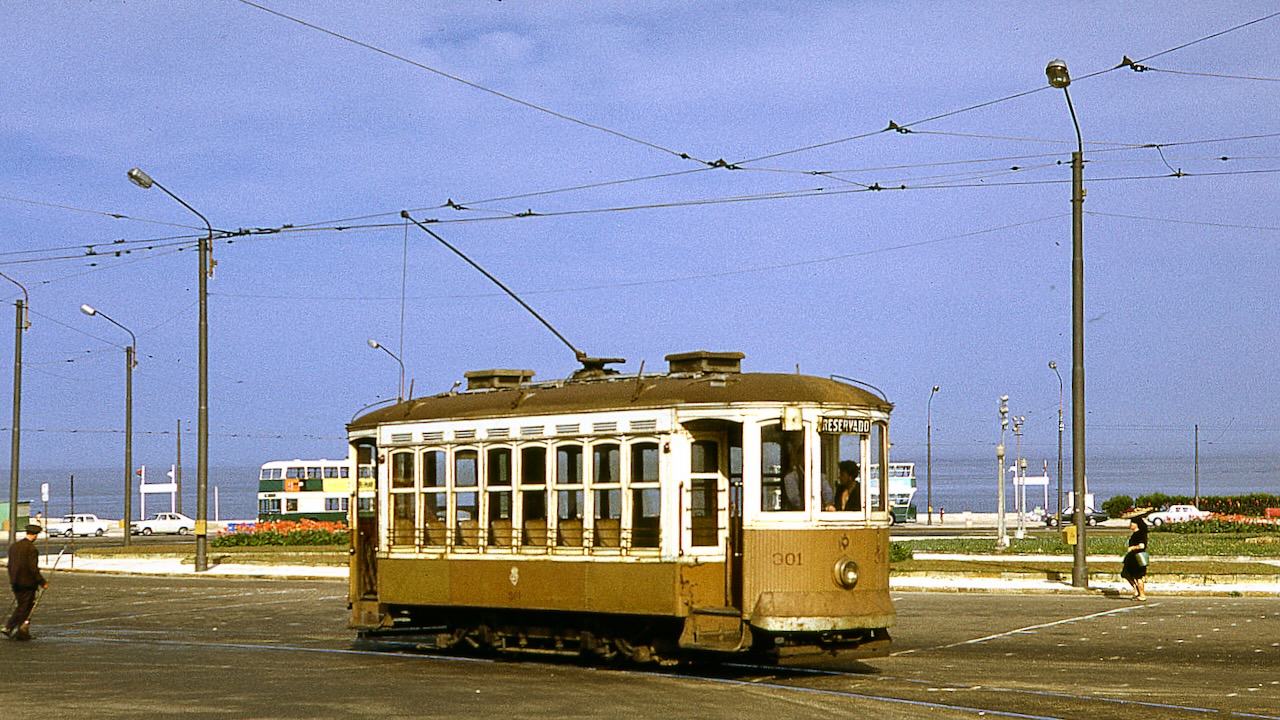
Fumistas
Probably inspired by the Belgas the workshops constructed in 1929 and 1930 sixteen 4-wheel cars with the same type of modern roofs as the Belgas. The very deep windows however were in the more American style, although not of the semi-convertible construction as the Brill cars. Instead of that the windows could be removed during…
-
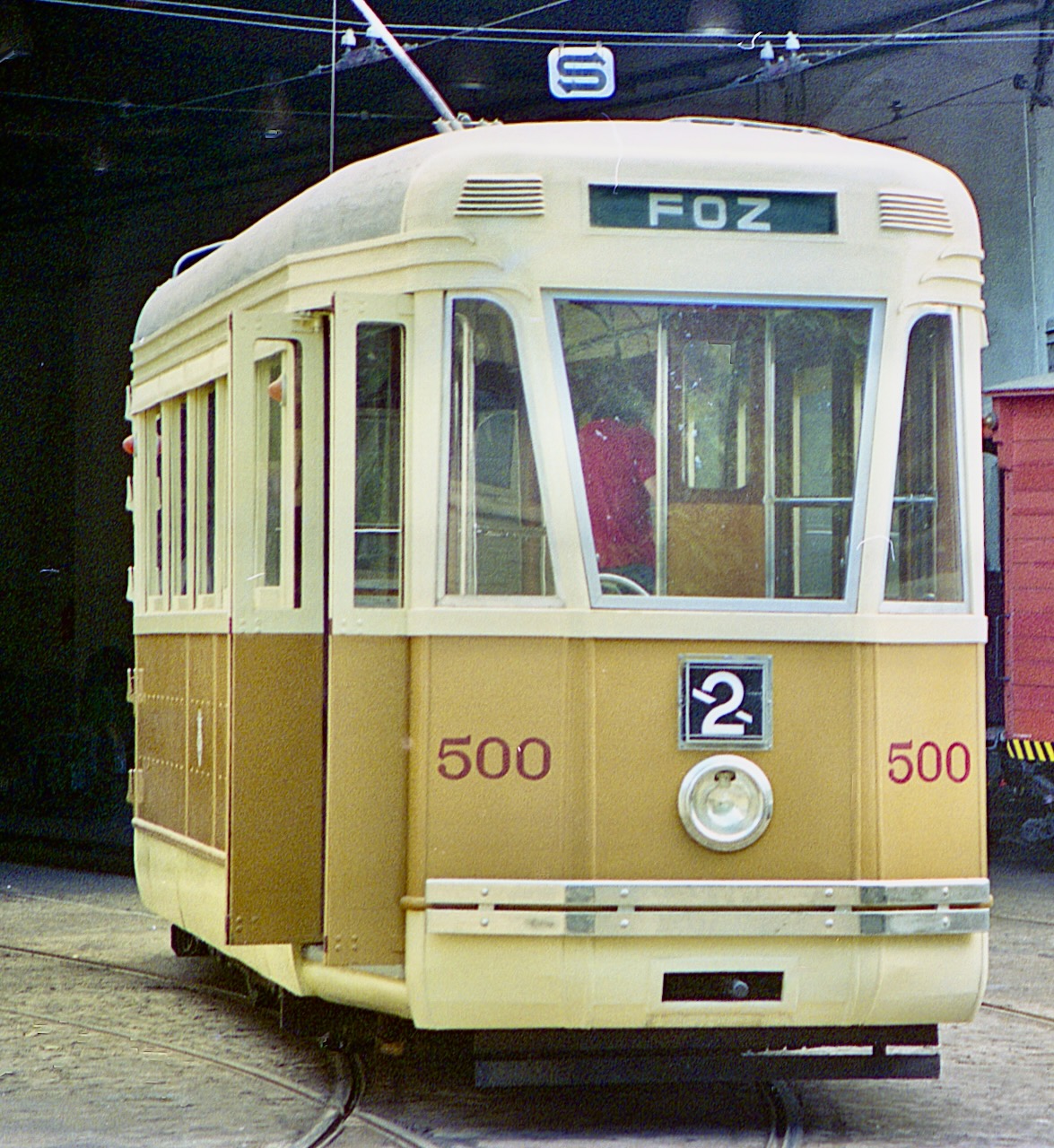
Carro 500
In 1951 the workshops of Boavista built a prototype for the intended new generation of trams including double-ended modern bogie cars. In the end these new cars were never built.
-
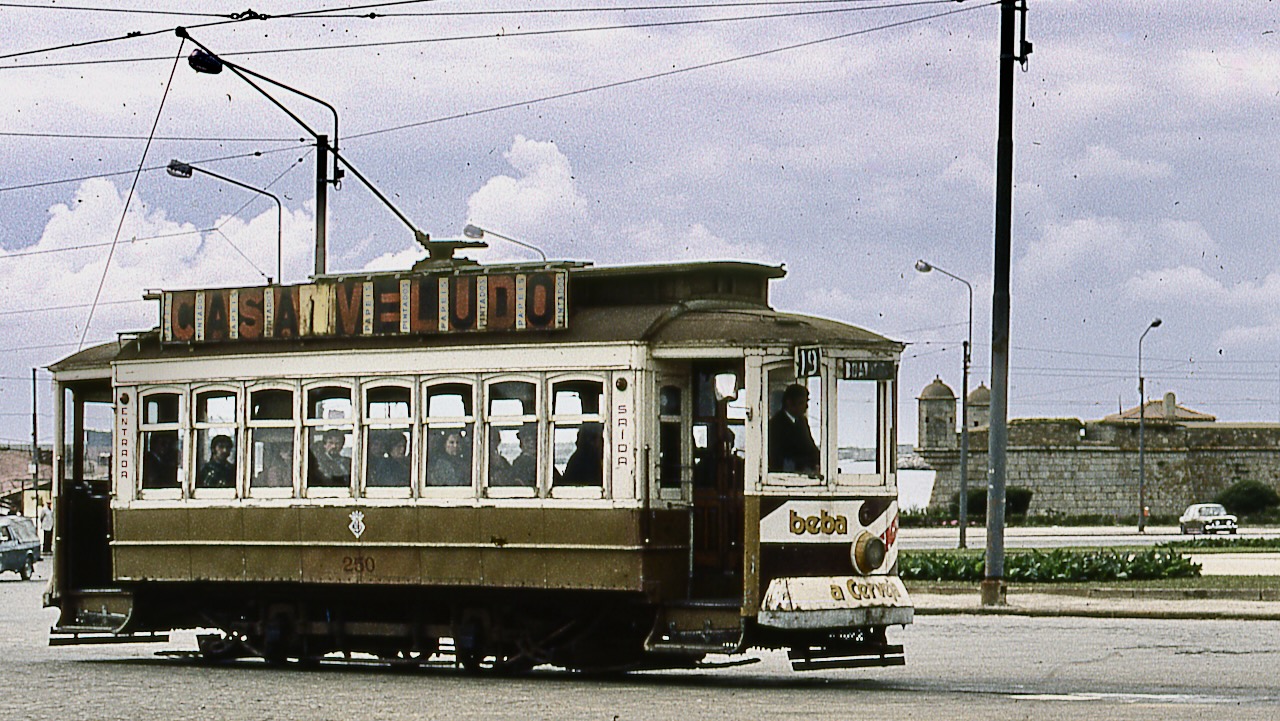
Brill-32
In the years 1926-1928 the workshops constructed 12 cars equal to the Brill-28 type but with an extended saloon with eight windows at each side instead of seven. These trams seated 32.
-
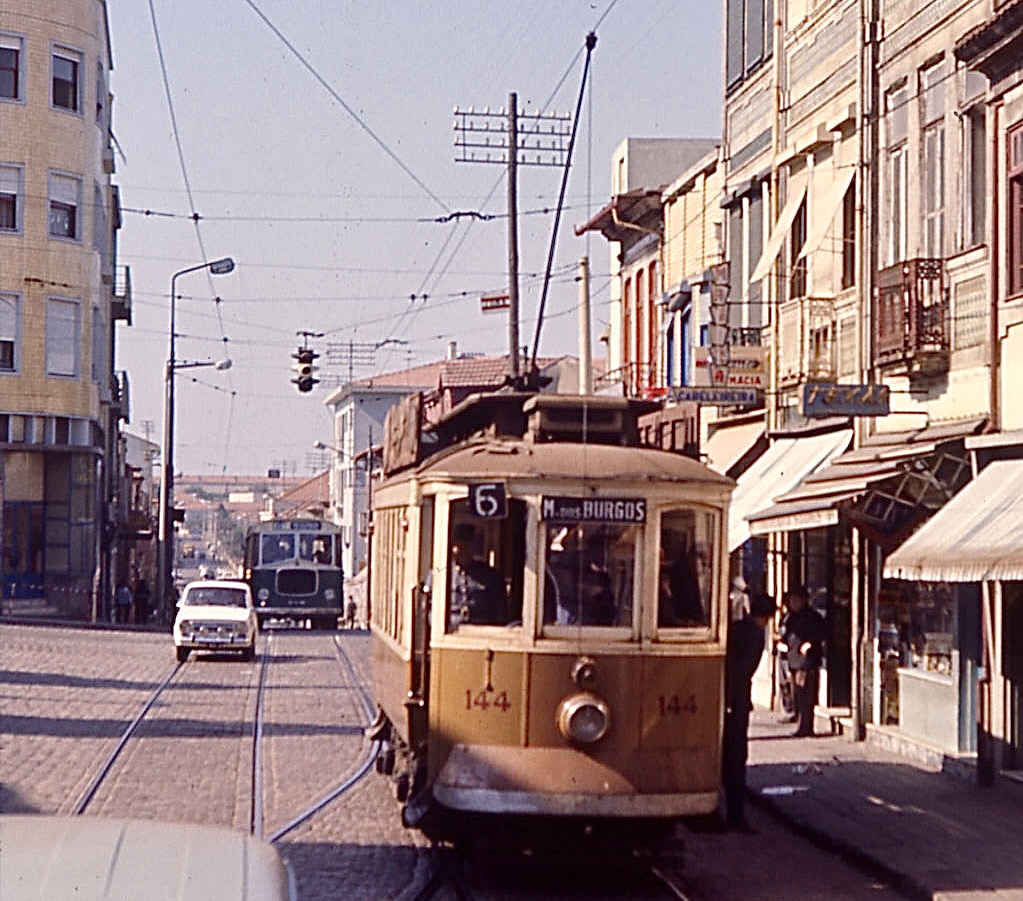
Brill-23
In 1909 the CCFP ordered 20 cars from Brill. These four-wheel cars were built to the Brill patented “grooveless post” semi-convertible design. Together with the Carros Ingleses these were the first tramcars with windscreens.
-
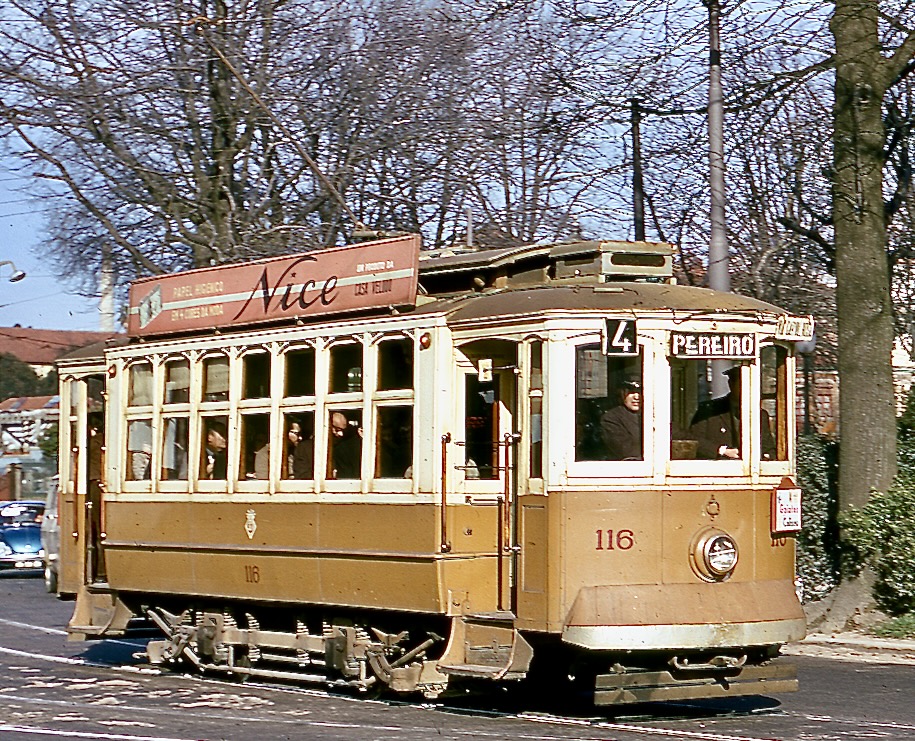
Carros Ingleses
In 1909 the CCFP ordered five cars with 7 drop windows each side from UEC of Preston in England. Together with the 4-wheel Brills these were the first tramcars with windscreens. The original numbering was 202-206, but was in 1913 changed to 296-300. The electric equipment came from Siemens-Schuckert. 296-299 got new Siemens D58 motors…
-
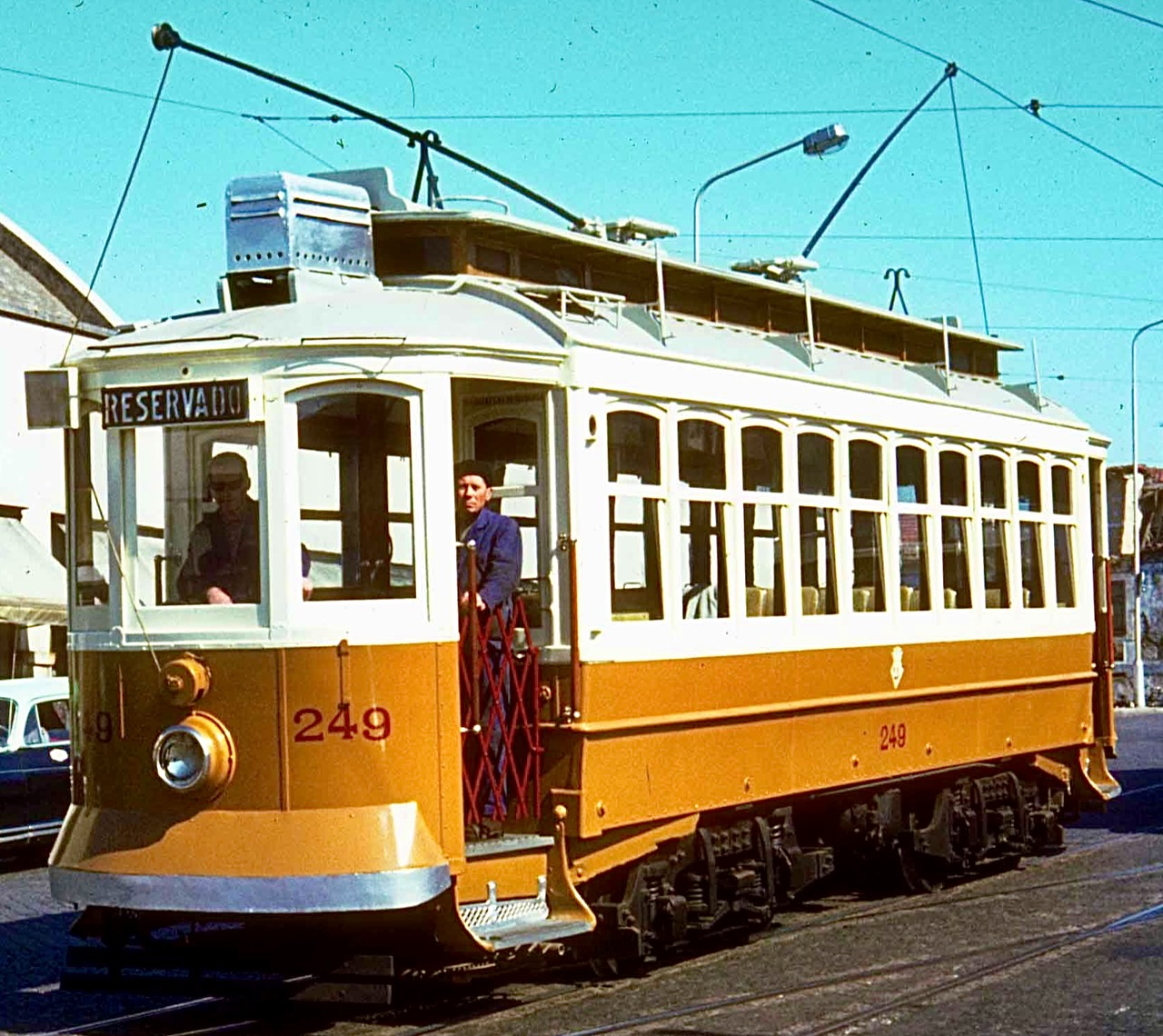
The Brill bogie tram of 1904
In 1904 from J G Brill Philadelphia an order was done for a Brill patent “grooveless post” semi-convertible car on Brill 27G bogies. The car was intended to be used on the “Marginal” (line 1) and got four Siemens motors because of the 10% incline at the East side of the Jardim do Infante. The…
-
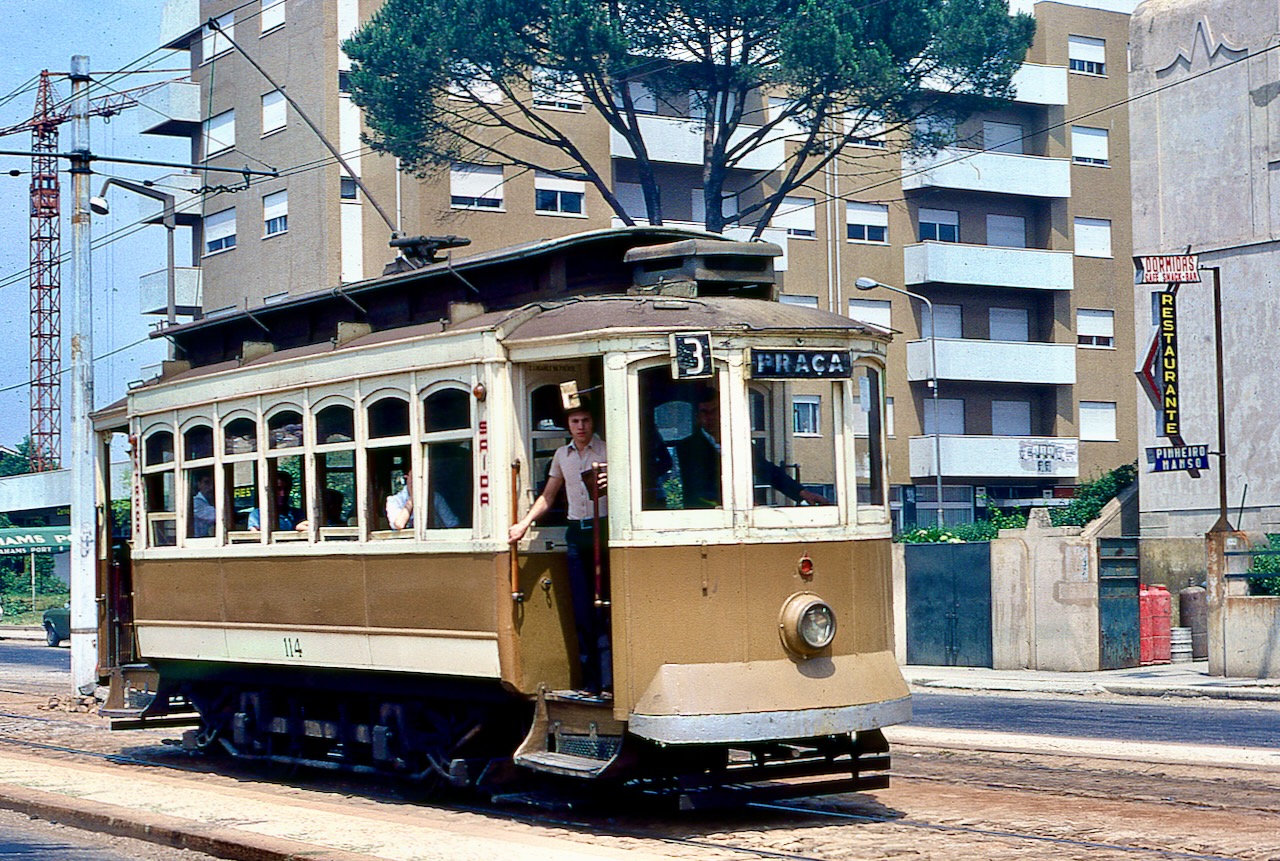
The 7-window Constructora trams
In 1907 A Constructora made two new tramcars with seven windows at each side and seating for 23 with transverse benches. These cars got the numbers 199-200. In the same period the workshops of the CCFP converted 6-window tramcar no.46 as well into a similar 7-window car. This car got the number 201 and had…
-
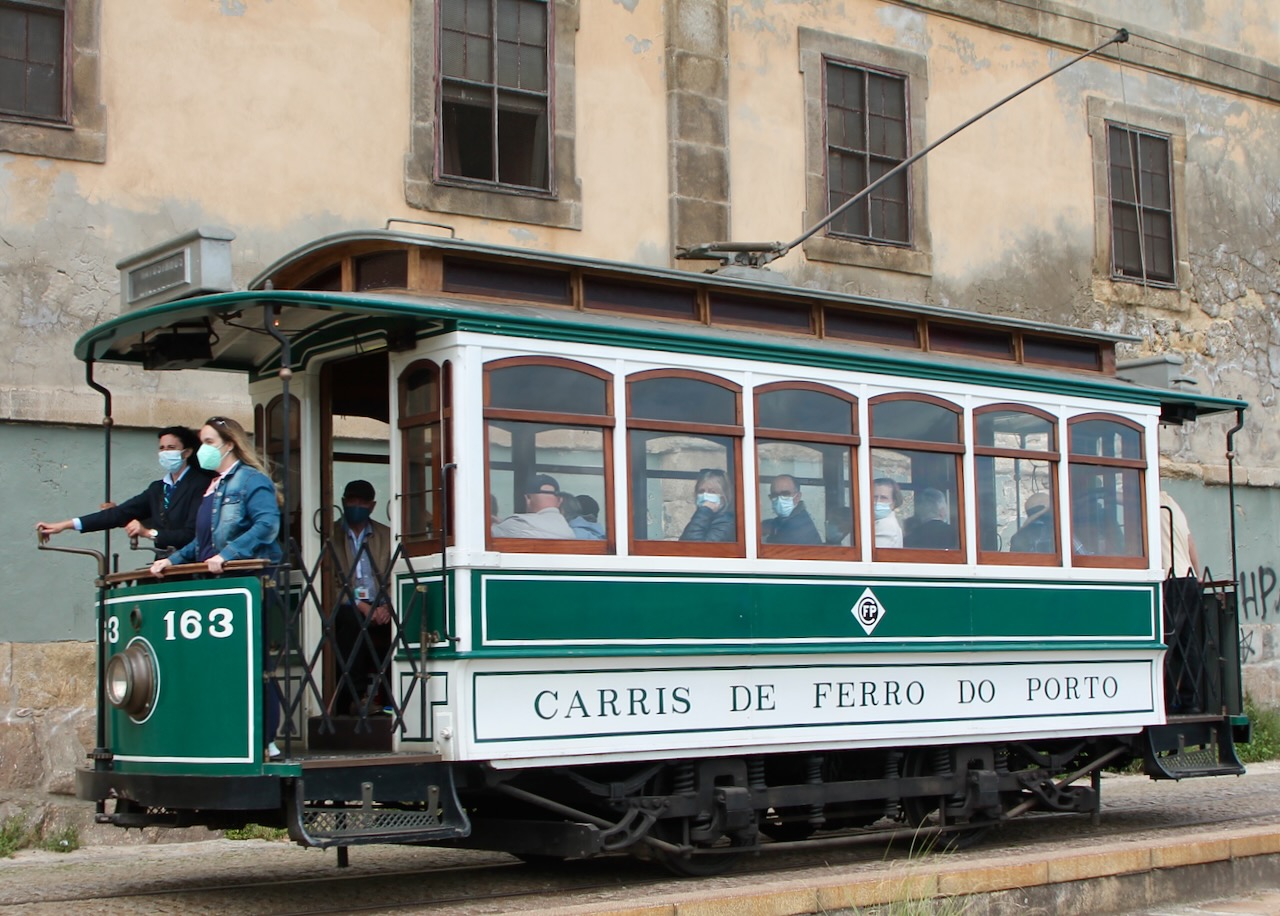
The 6-window Constructora trams
In 1904-1906 A Constructora delivered 24 cars with six windows on both sides and seats for 22 on 2 longitudinal benches of 5.22 m. The trucks came from Brill, the motors and controllers from Siemens. These were the last “Risca ao Meio” type cars. They were numbered 43-54, 57-66 and 68-69. Car no.46 was in…
-
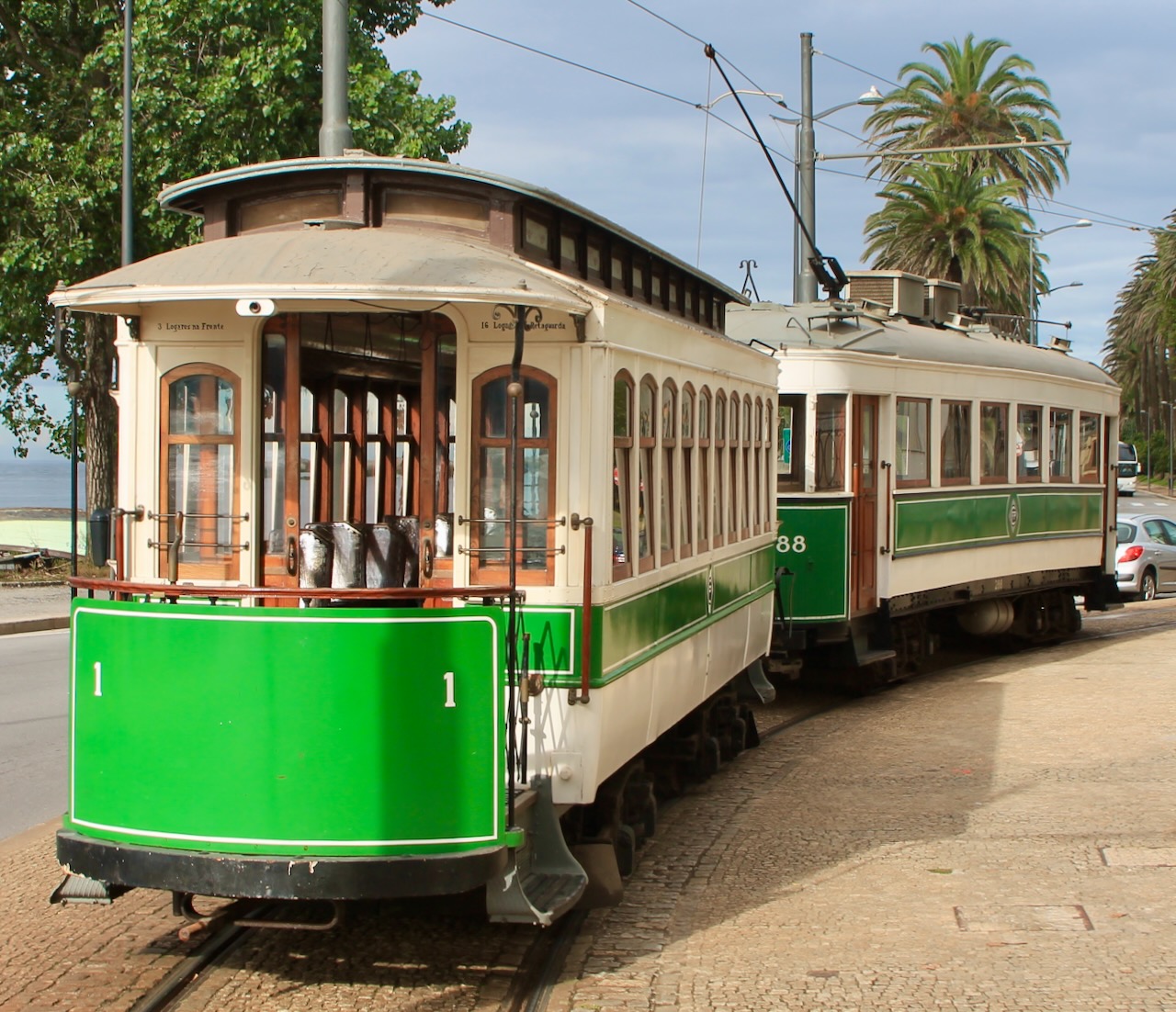
The Bogie Trailers of the Porto Trams
The body of trailer 1 was, together with the small body which was used for CE 250, made in 1909 by A Constructora without having received a firm order. After some discussion the CCFP acquired both bodies, used the large one for trailer 1 and ordered from A Constructora six more bodies of this type…
-
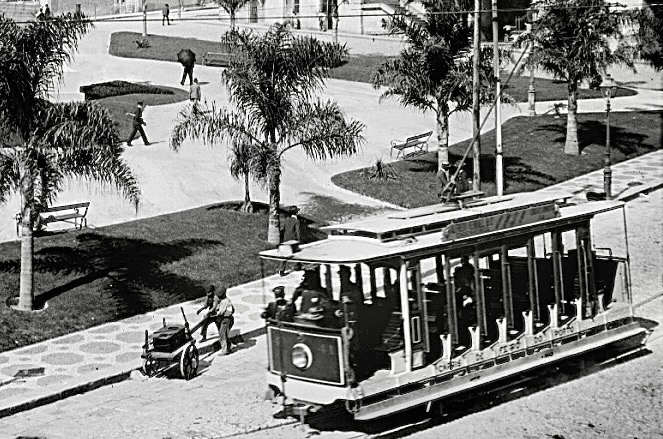
The open electric trams of Porto
In 1903 the workshops converted an open mule car to an electric car for service on the longest lines. It got the number 40 and made a successful test run on 21 February 1904. The fate of this car is a mystery as it was not reported anymore after 1904.
-
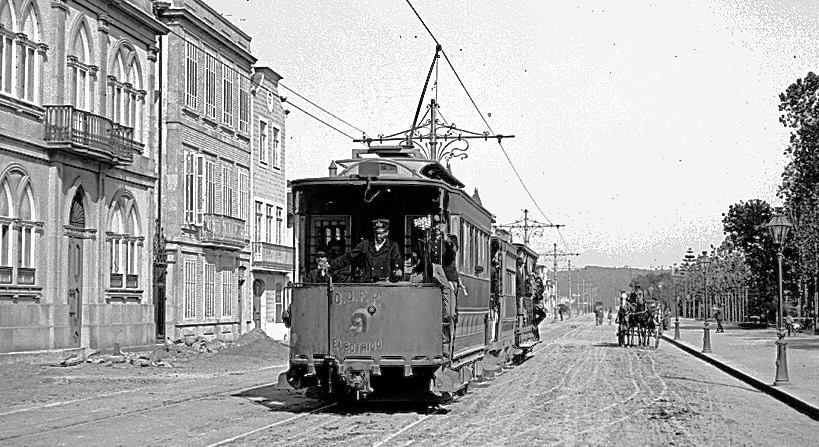
The first eléctricos of Porto
Like any other major tram system, Porto put over time a number of different types of trams in service. This page is about the first generation of electric trams in Porto, the types entering service between 1895 and 1903.
-
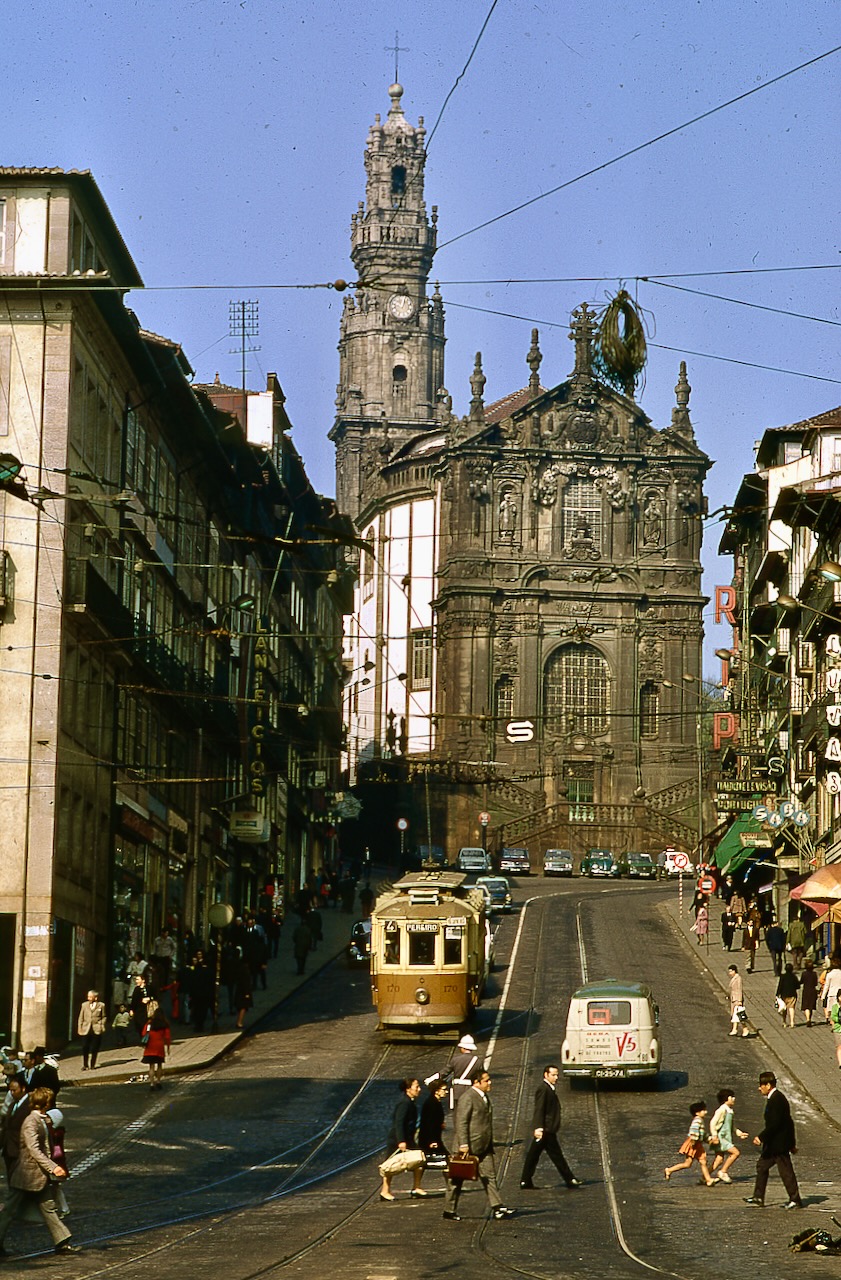
The Porto Electric Tram Network, the STCP years since 1946
The first electric tramline in Porto was opened in 1895. Until 1946 the network was operated by the CCFP: Companhia Carris de Ferro do Porto. This was a private company. In 1946 the operations were taken over by the municipal owned STCP: Serviço de Transportes Colectivos do Porto (now Sociedade de Transportes Colectivos do Porto)…
-
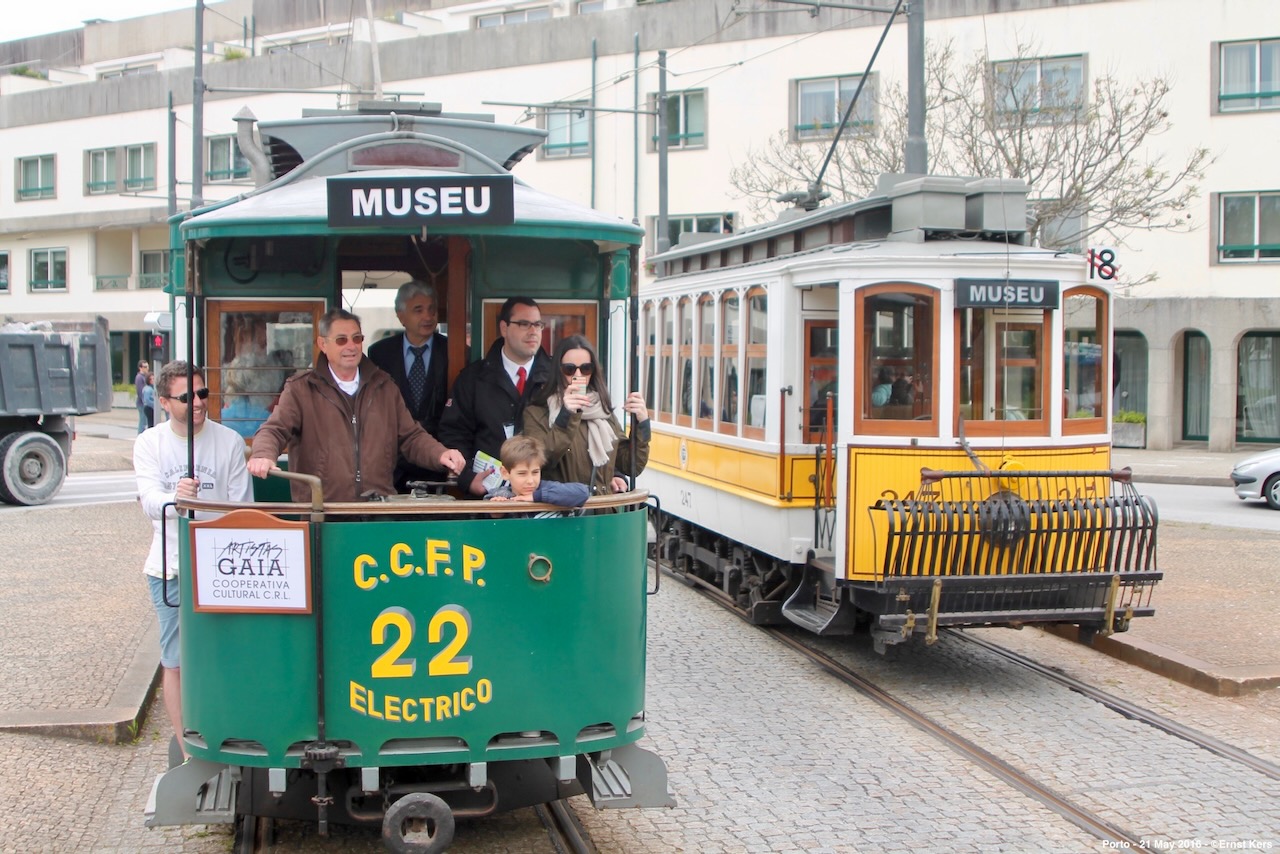
The Porto Electric Tram Network, the CCFP years 1895-1946
The first electric tramline in Porto was opened in 1895. Until 1946 the network was operated by the CCFP: Companhia Carris de Ferro do Porto. This was a private company. In 1946 the operations were taken over by the municipal owned STCP: Serviço de Transportes Colectivos do Porto (now Sociedade de Transportes Colectivos do Porto)…
-
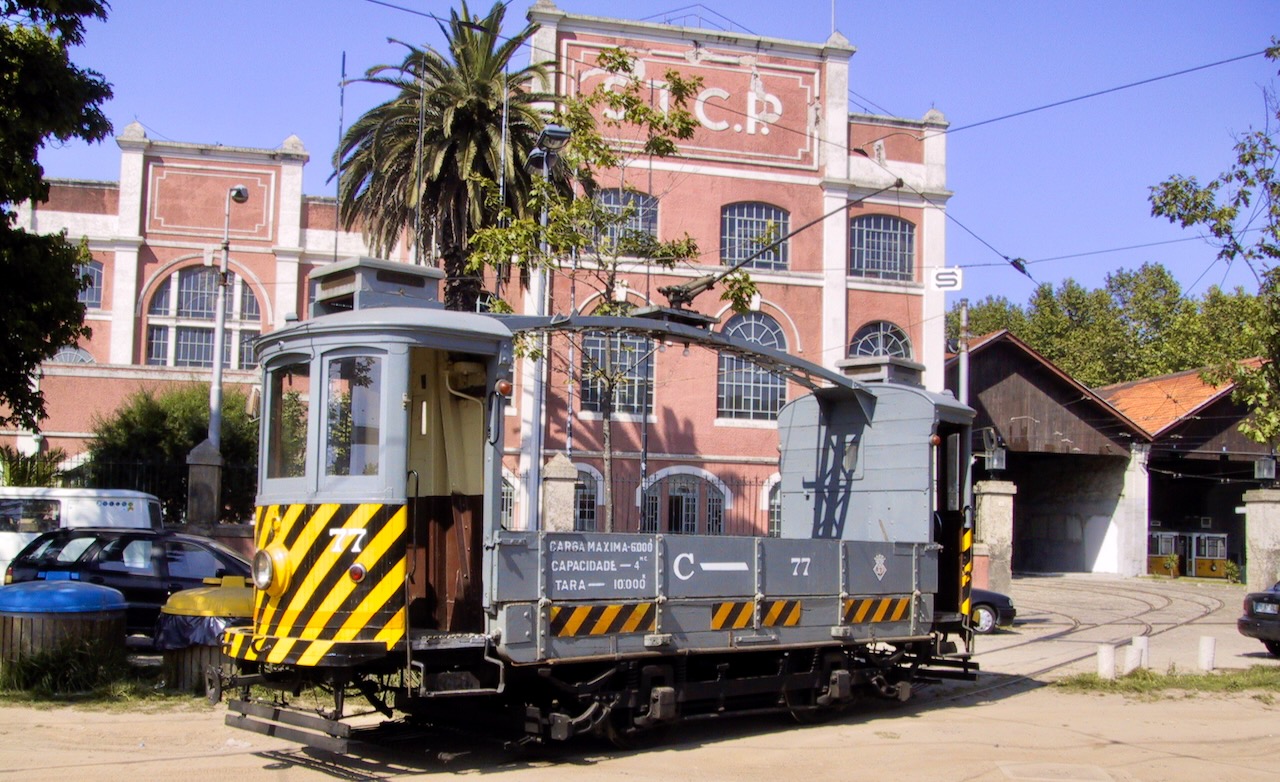
The Porto Freight Trams
On few urban tram systems freight trams were operated. There were urban systems having transport of a single type of goods over a single route, but Porto was exceptional with significant transport of many different kinds of freight with sidings for (un)loading scattered over most of the network. This page gives an overview, although not…
-
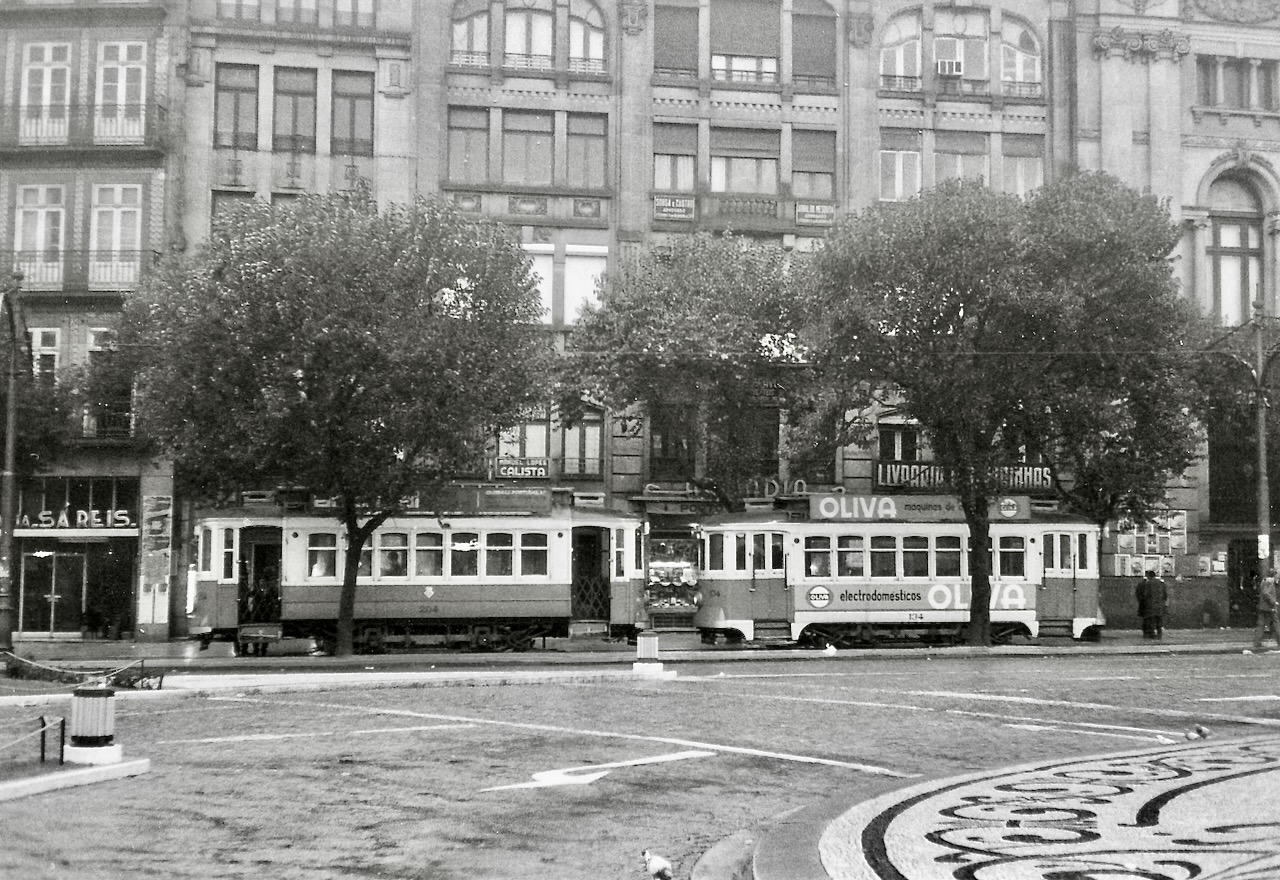
Praça da Liberdade
Praça da Liberdade, until 1910 Praça Dom Pedro IV, is the heart of the city of Porto. When the first mule trams arrived here in 1875, the Northern side was still occupied by the old city-hall. Most mule trams did not have their terminus on Praça, but continued to another destination. There were only single…
-
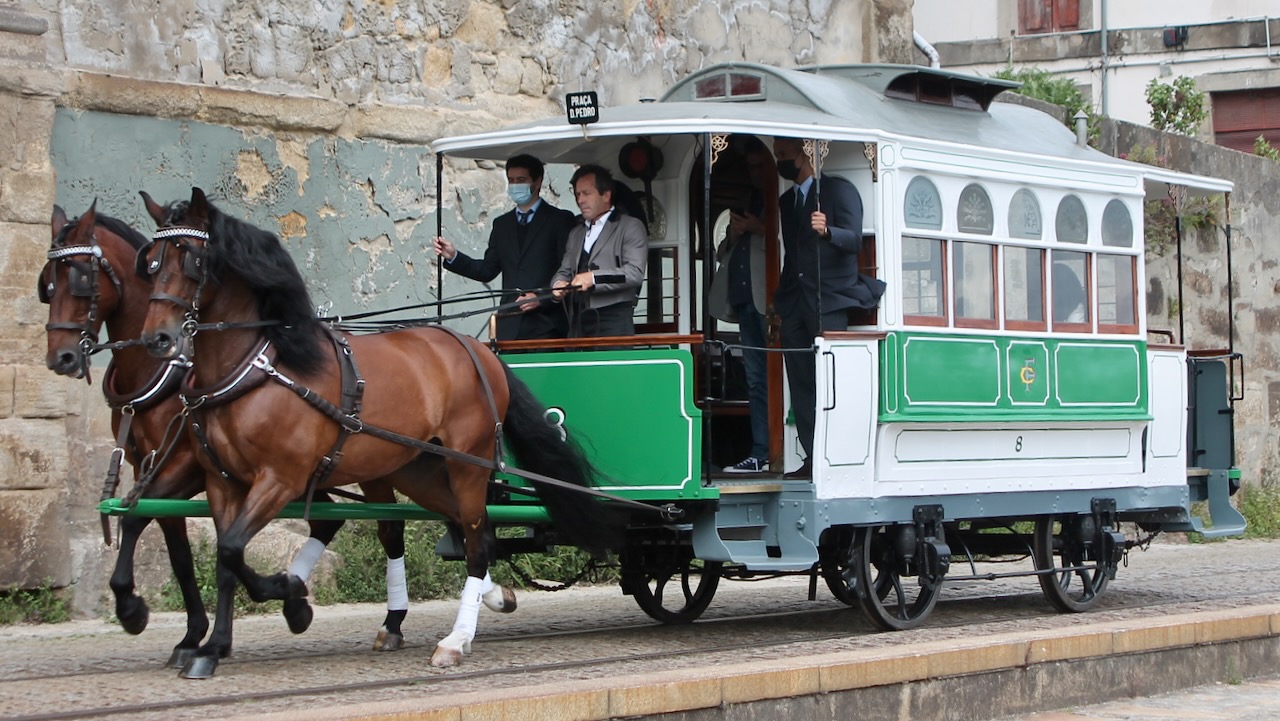
The Mule (horse) Tram period
Porto, like many other cities, developed a horse tram system in the last decades of the 19th century, although instead of horses mainly mules were used to haul the vehicles. This page tells the history of these first trams of Porto. There is a separate page about the oldest tram vehicles.
-
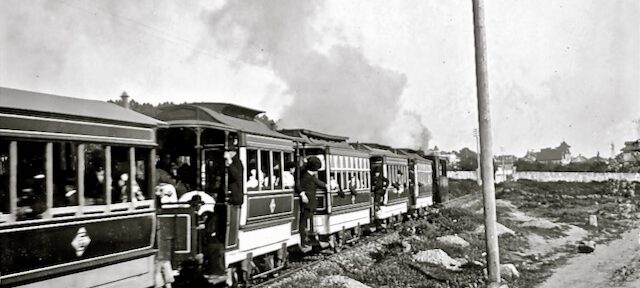
The Oldest Porto Tramcars
The history of the oldest Porto tramcars is very complicated, but partly also obscure. They were hauled by both mules and steam locomotives. Later part of them were transformed into electric trams while the others continued as trailers of the electric trams. The majority was disposed of during the second decade of the twentieth century,…
-
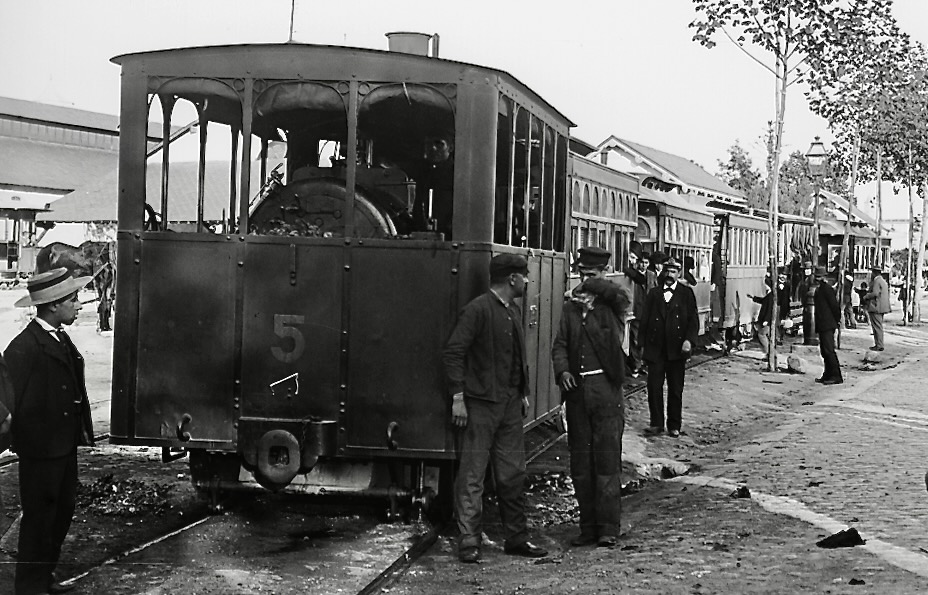
The Porto Steam Trams
In Porto, like in most cities before electric trams were introduced, horse trams provided the urban public transport, although in Porto more often mules were used. Steam trams were used in many cities too, most on busy suburban routes. Porto was one of the cities in Europe using steam locomotives for trams. This page is…
-
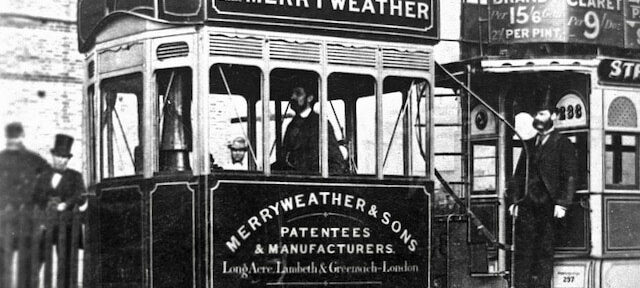
Merryweather and Sons, steam tram locomotive builders
Actually the title of this page is wrong. The major activity of the Merryweather company was always making fire fight equipment. As such it was founded in 1692, although originally with a different name. Over the next 144 years the name changed several times with new owners and associates joining or leaving the firm. Fire…
-

Ponte Luís I
The Ponte Luís I, often called the Ponte Dom Luís, connects the central parts of Porto and VN de Gaia. It had and has a major role in the public transport of Porto and is one of the most important landmarks of the city. This bridge with two decks was built in the 1880’s as…
-
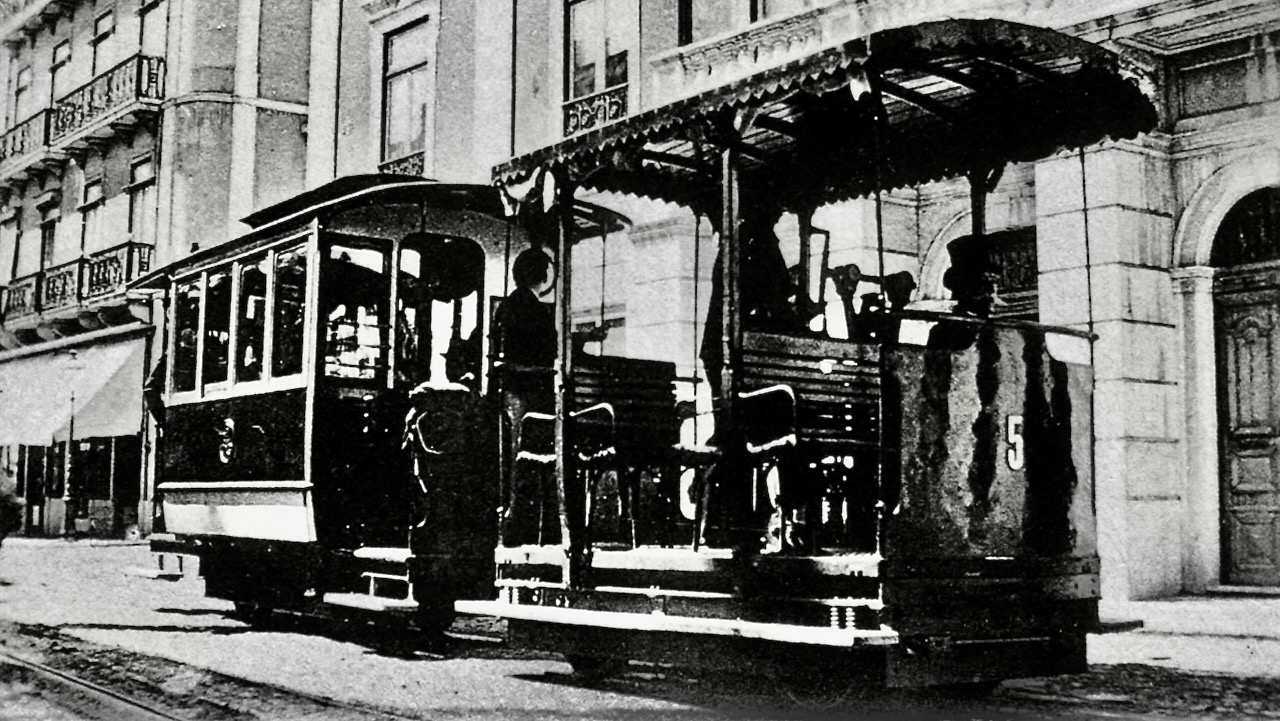
The Lisboa cable trams
Lisboa is built on hills. Mule or horse trams could only go up the steep gradients with the use of extra animals. As the animals were the largest cost of the whole tram operations, it was a too costly affair to have many or long steep inclines within the network. In 1873 in San Francisco…
-

The funiculars of Lisboa
The Lisboa funiculars, in Portugal called ascensor or elevador, are part of the urban public transport system. All three were first operated by the NCAML, the same company that also operated the Estrela and Graça cable tramlines. The funiculars are now operated by the CCFL. As the funiculars are in public streets, the cable is…
-
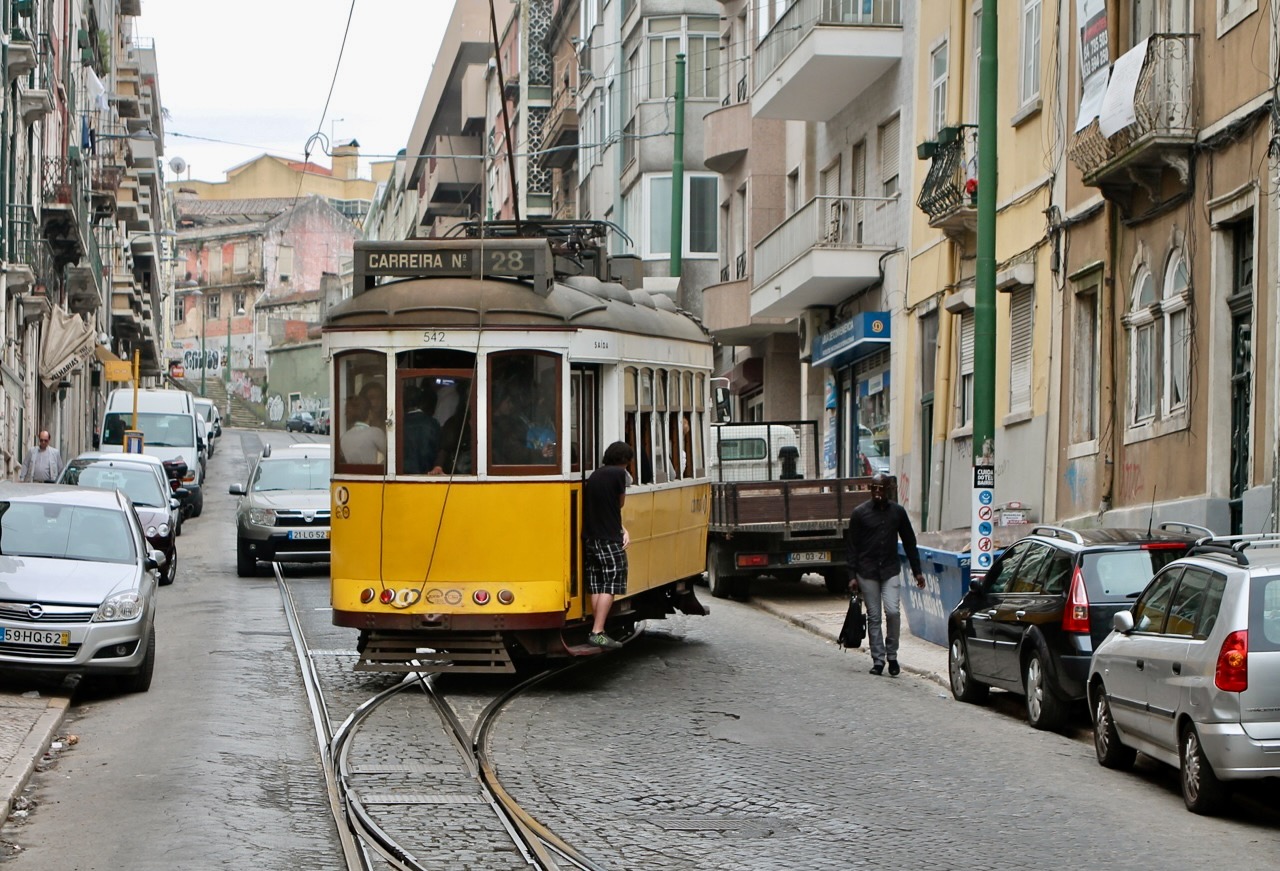
Changing the rule of the road from left to right
Question: I know that Portugal shifted from driving left to right in 1928. I could imagine, that the trams had only left doors when shifting. How did Portugal cope with this? Did the trams continue in the left side for some time, or was it properly planned as in Sweden, where public transportation introduced double…
-
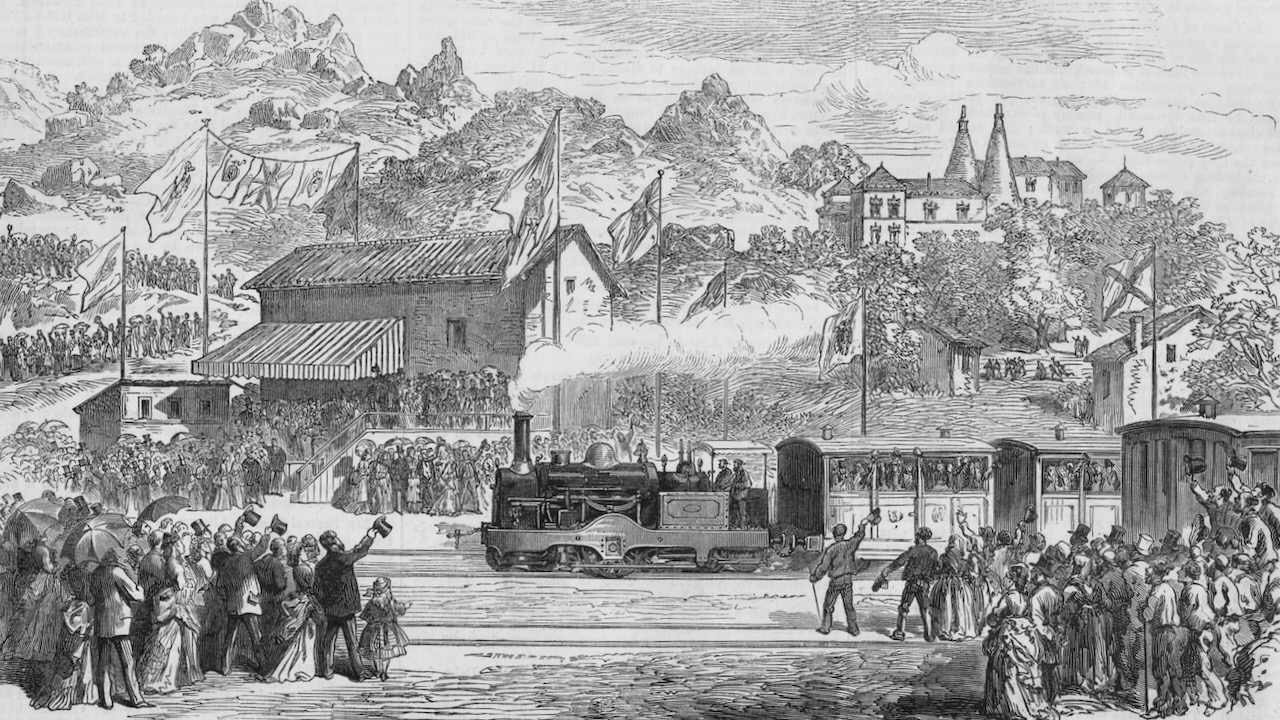
Larmanjat
The Larmanjat was a monorail system invented by the french engineer Jean Larmanjat (1826-1895). The system was made of a central vignola type iron rail and at both sides longitudinal wooden sleepers about 60 cm from the central rail. This system was adopted by “The Lisbon Steam Tramways Company ltd“. Locally the system was called “Companhia de…
-

Coimbra trams
Coimbra was one of the five places in Portugal that had an electric tram system. The city is situated about 200 km north of Lisboa and 120 km south of Porto and dates from the Roman period. The oldest part of the city “Alta” or “Almedina” occupies an irregularly-shaped hill overlooking the Rio Mondego. Already…
-

Old black & white photos and how they show the colours
Because we are used to panchromatic black & white these days, not everyone realises that old photos are often of a different kind of black & white. E.g. a tram on an old photo looking dark, could have been yellow.
-

Braga trams
Braga was one of the five places in Portugal that had an electric tram system. This very old city, with its roots in the pre-historic period, is situated about 55 km north-east from Porto. Apart from the many monuments in the city itself, one of the most important destinations for visitors is the Santuário do…
-
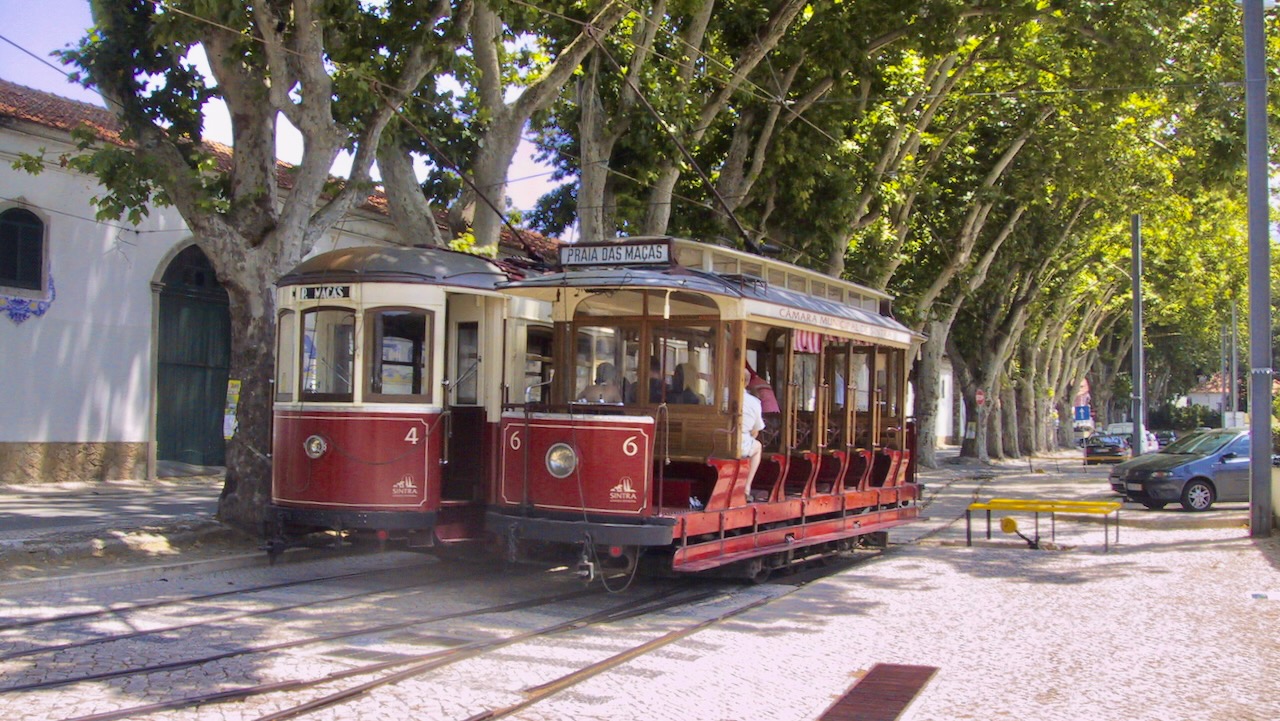
Sintra trams
In 1904 an 11.7 km long metre gauge electric tramline was opened from Sintra (station) to Praia das Maças (Applebeach). An 1.0 km long urban line connected the station in Sintra-Estefânia with Sintra-Vila. Some freight transport existed, mainly between Banzão and the railway station. In the small Banzão depot is still a weigh bridge and…
-

Portugal tram systems
This is an overview of the tram systems that exist or existed in Portugal.
